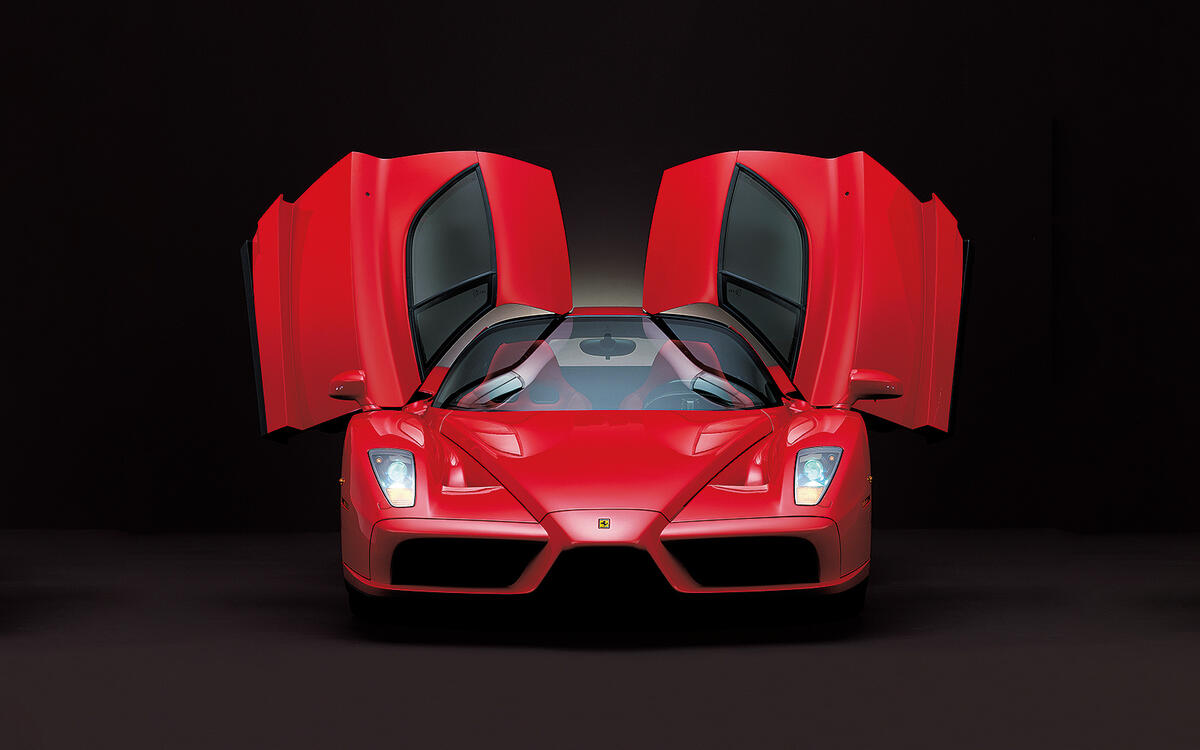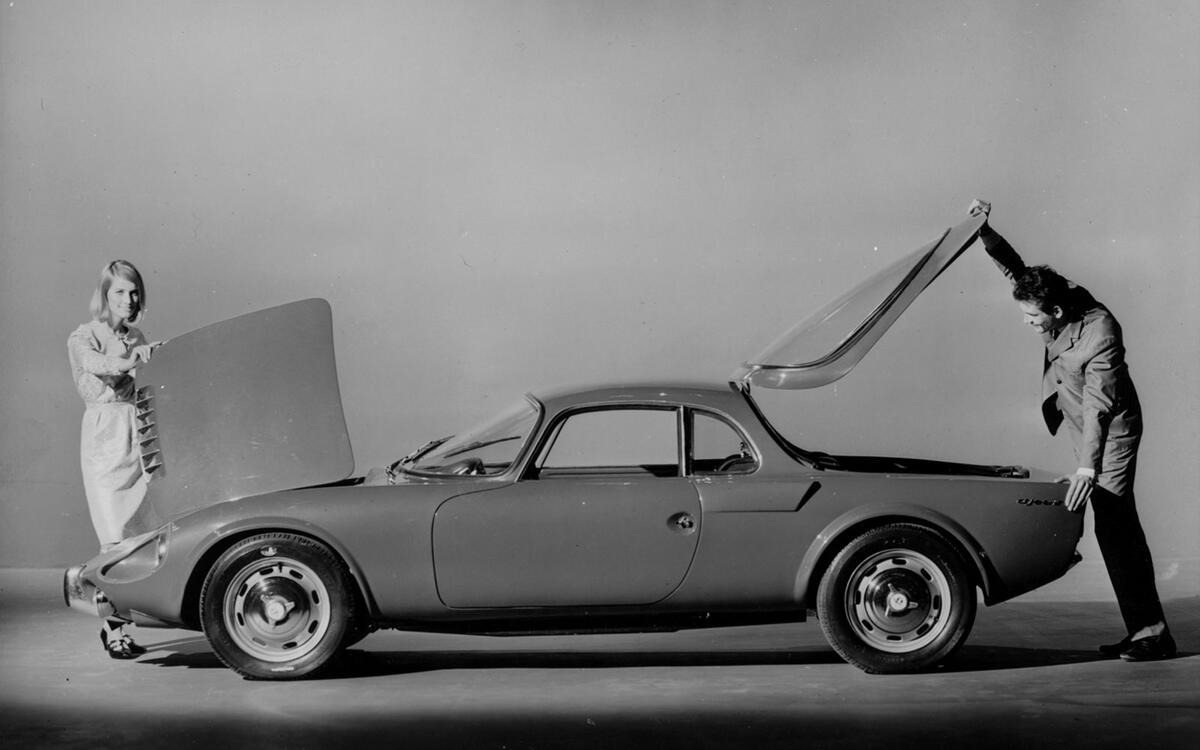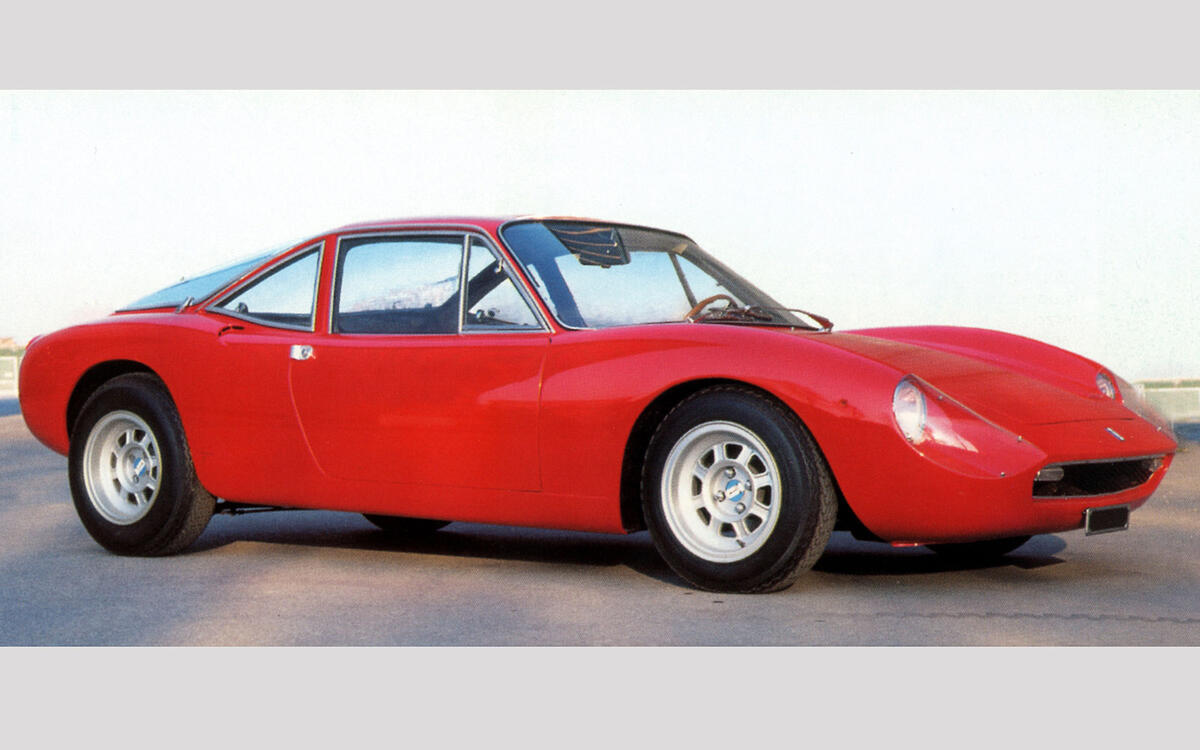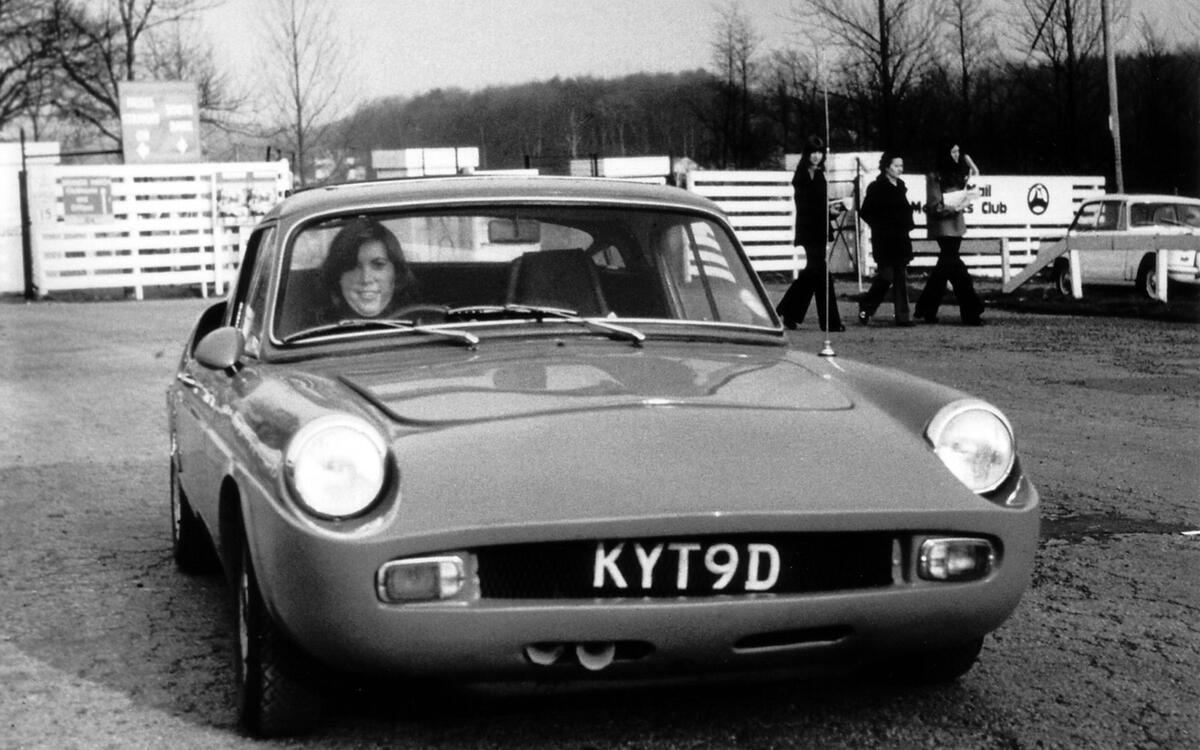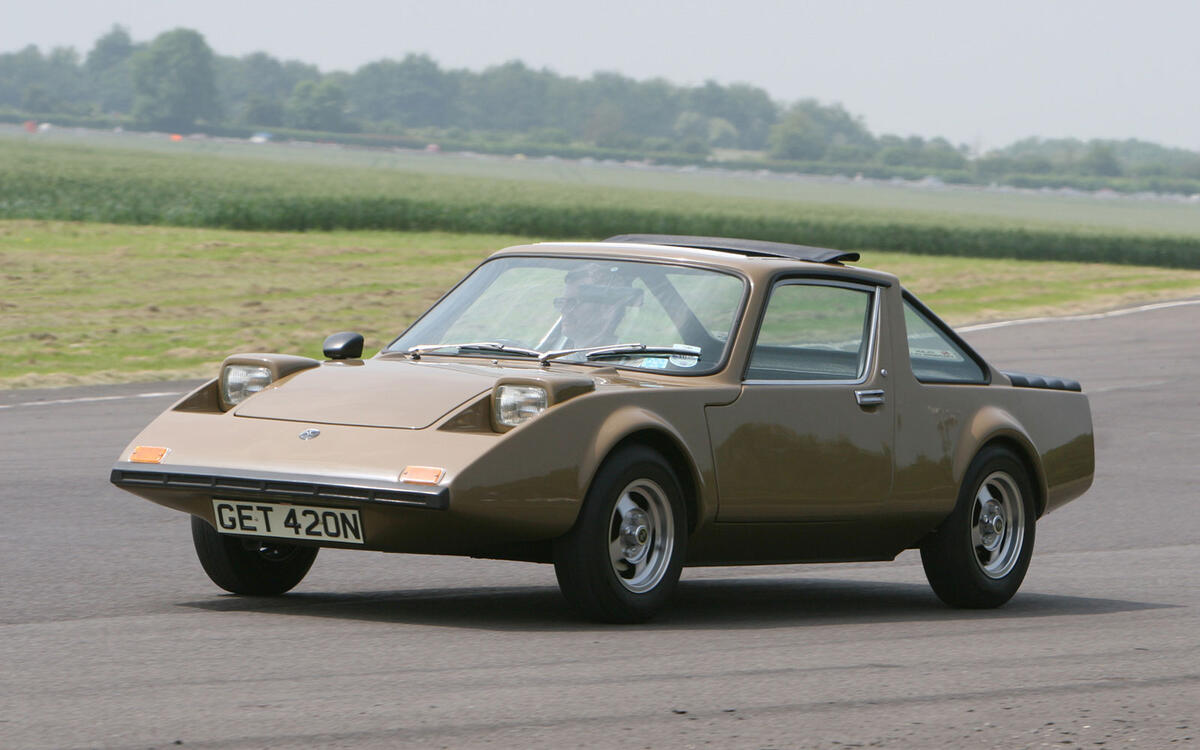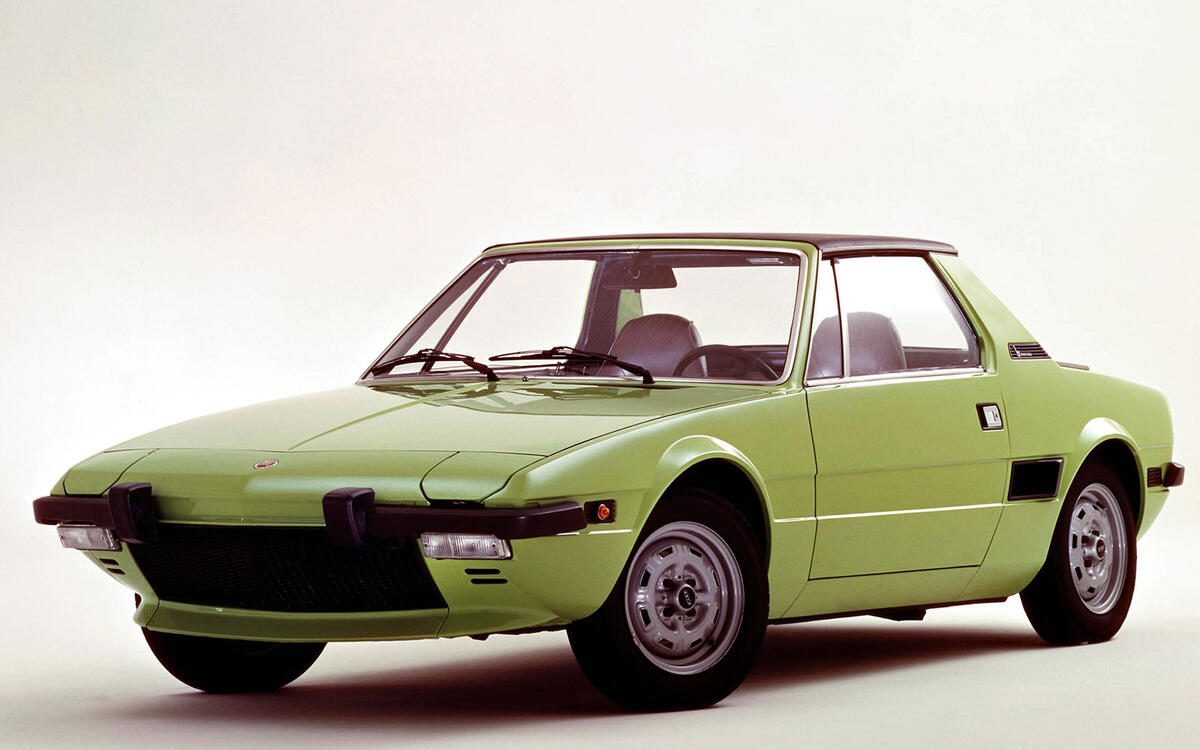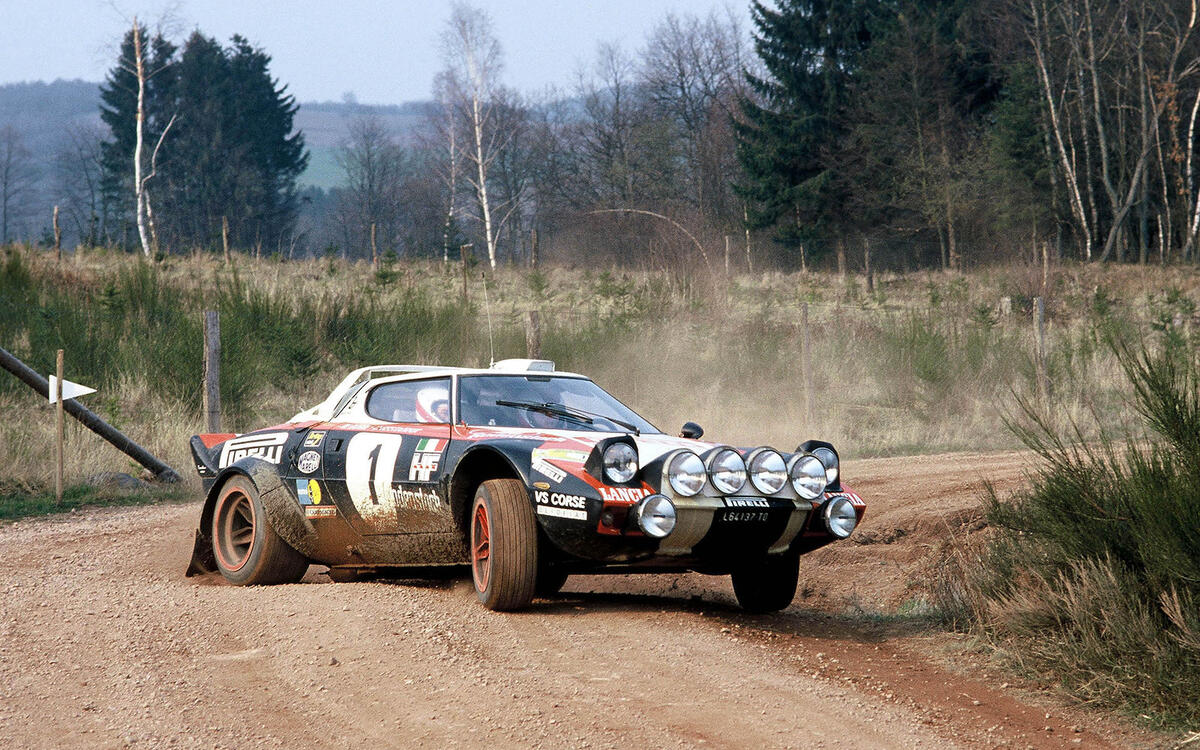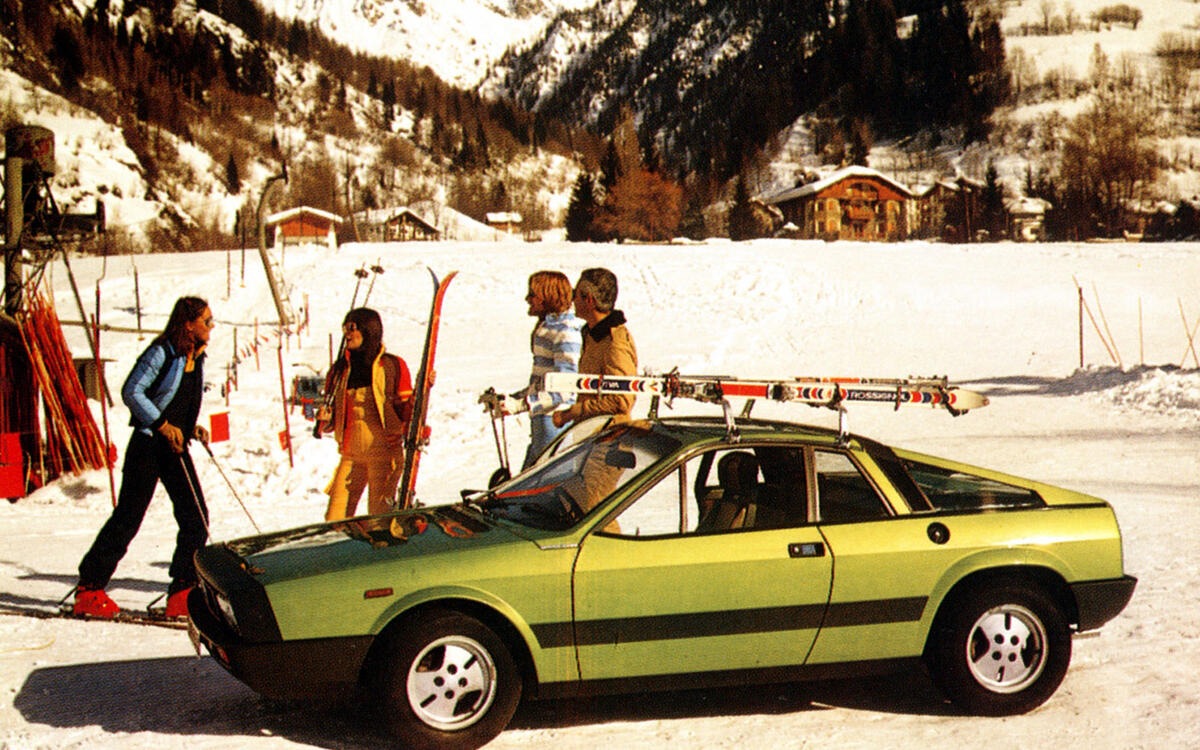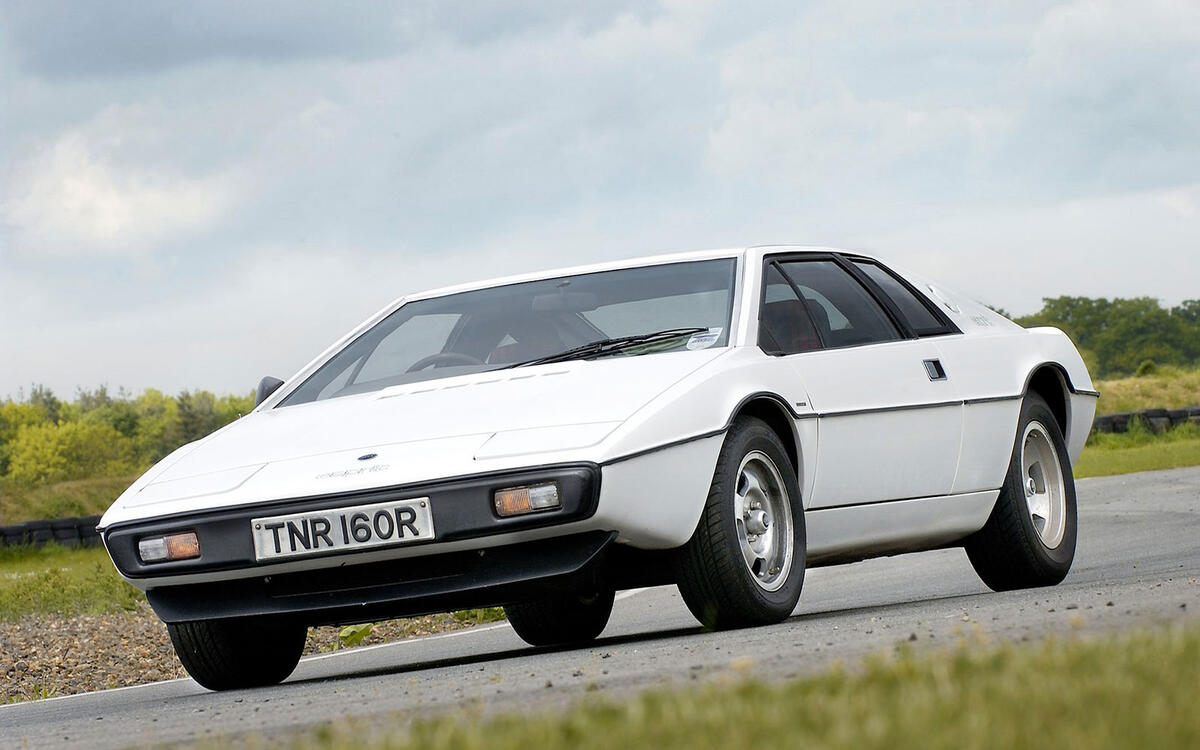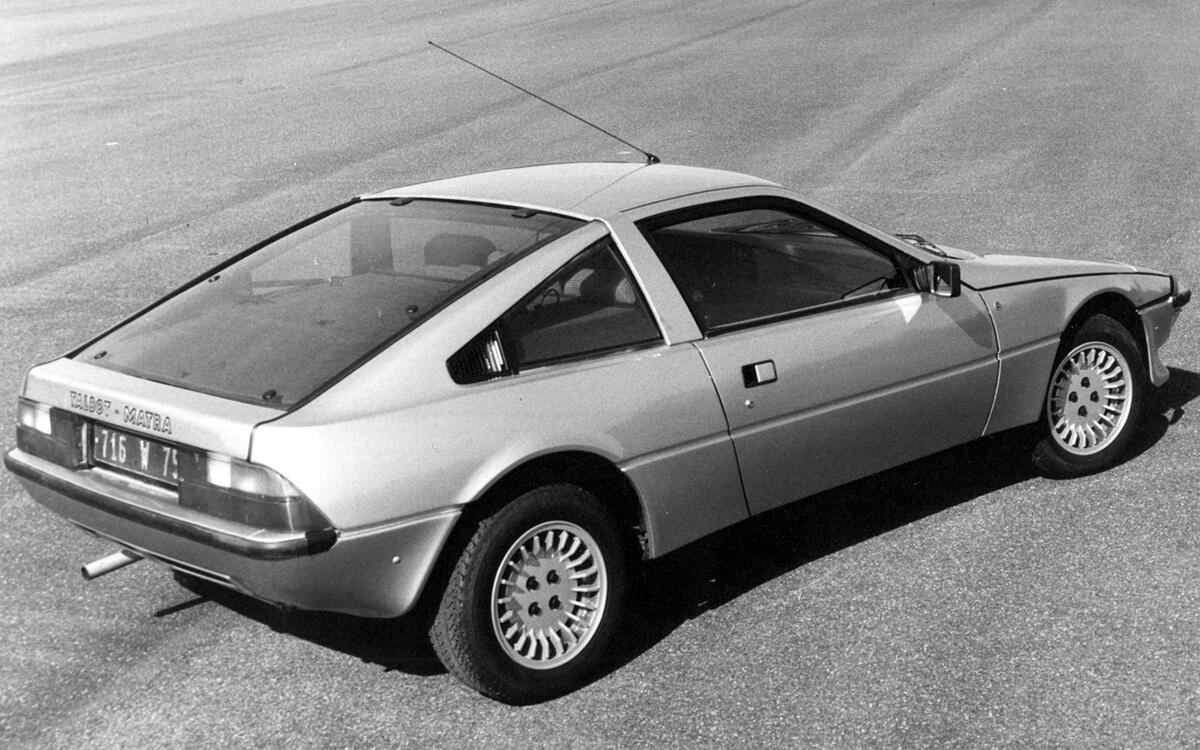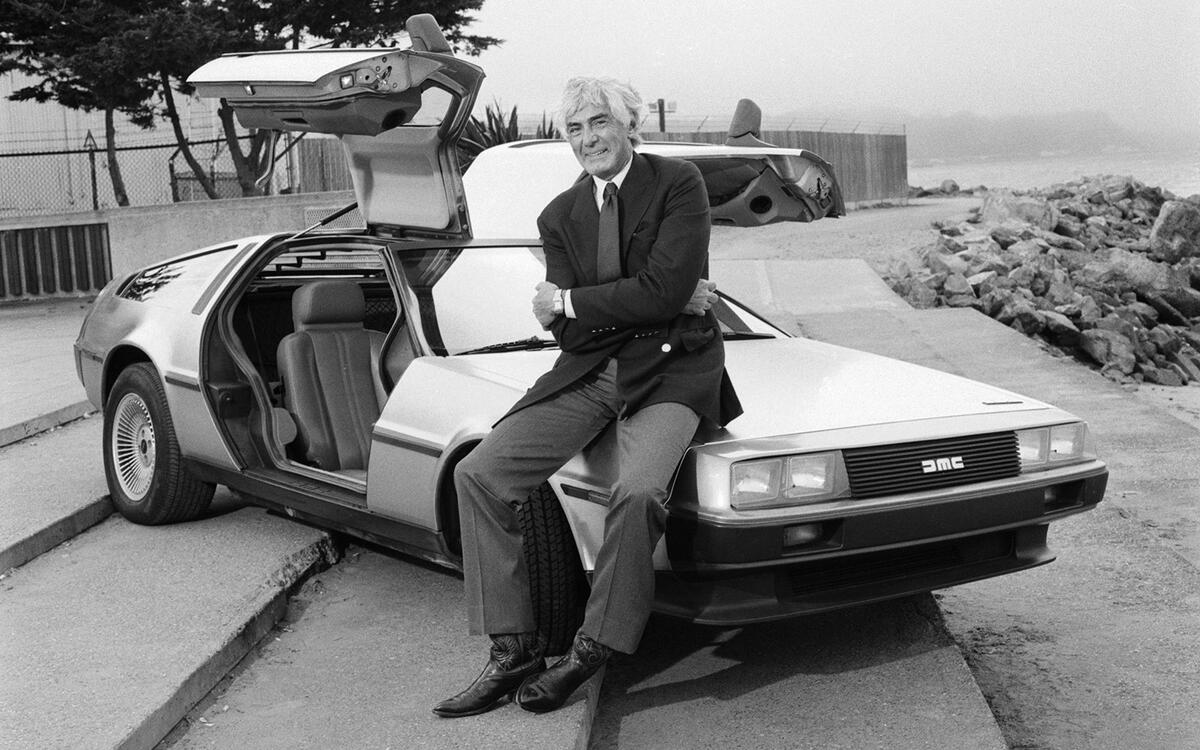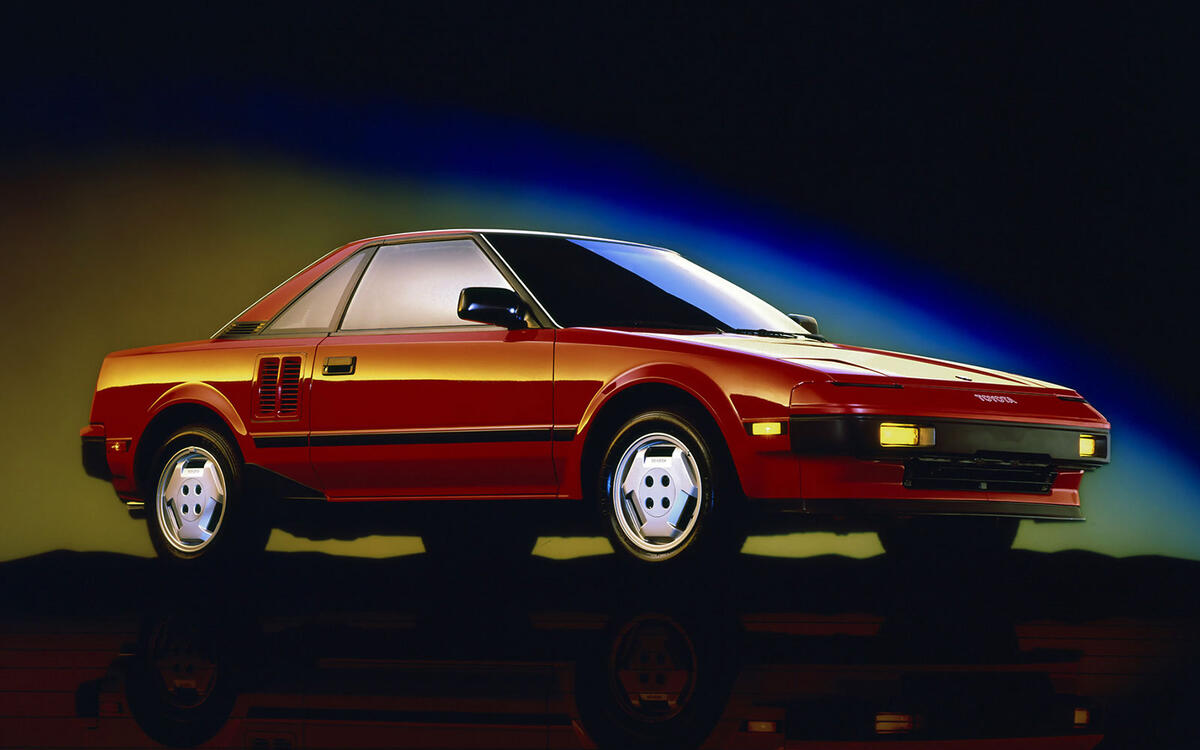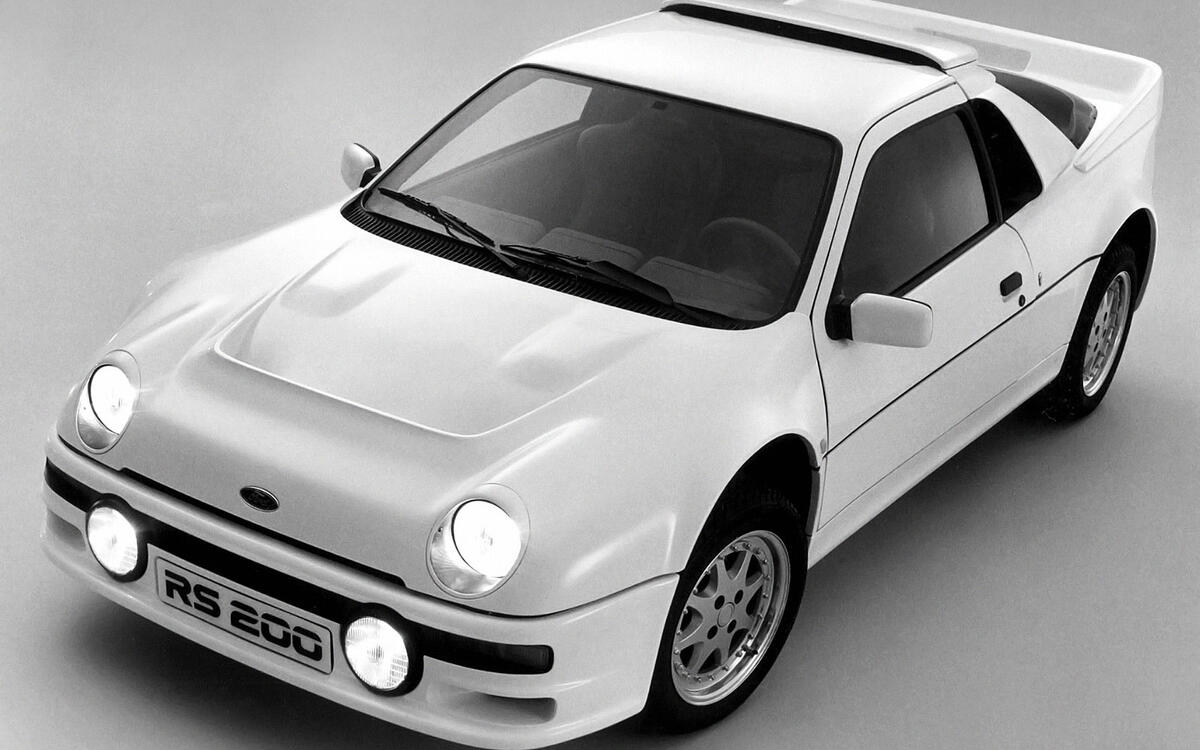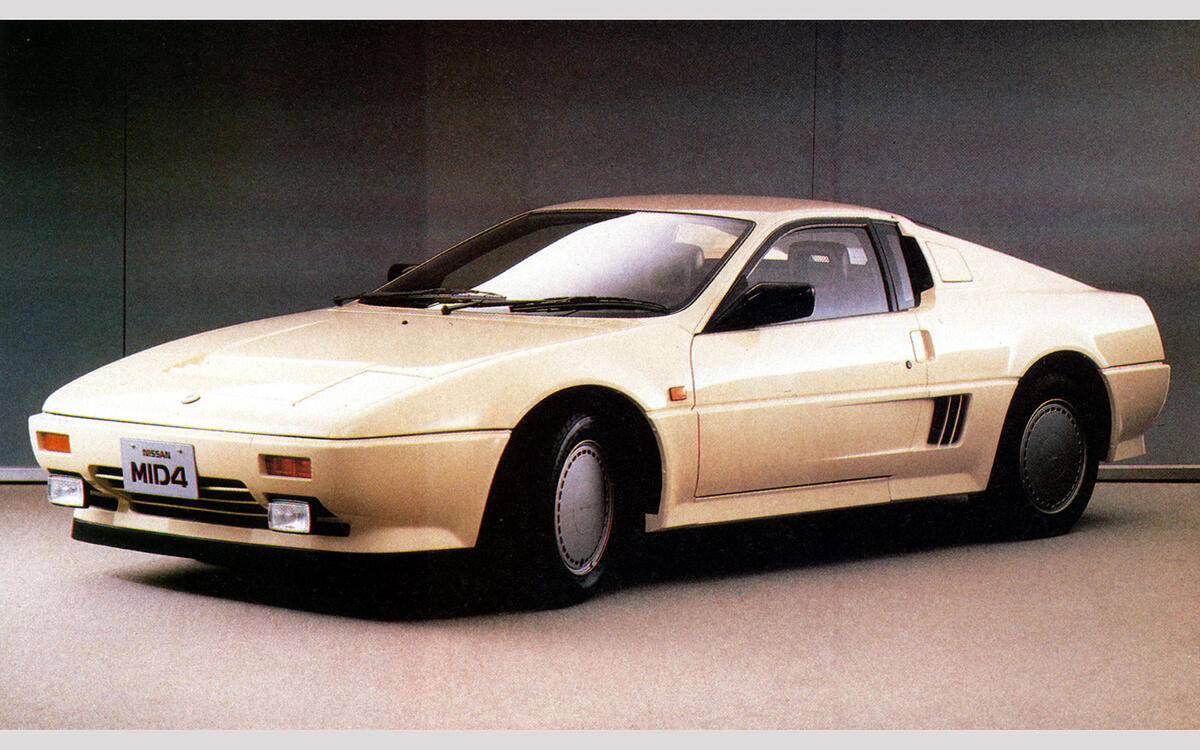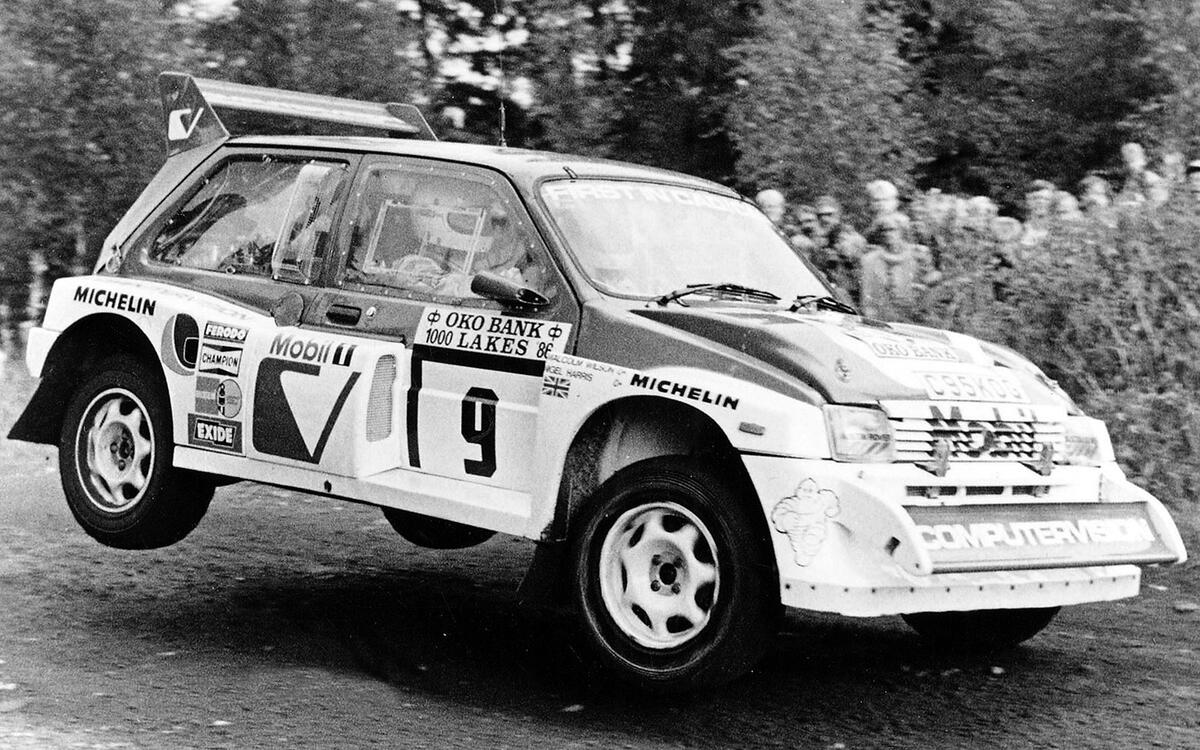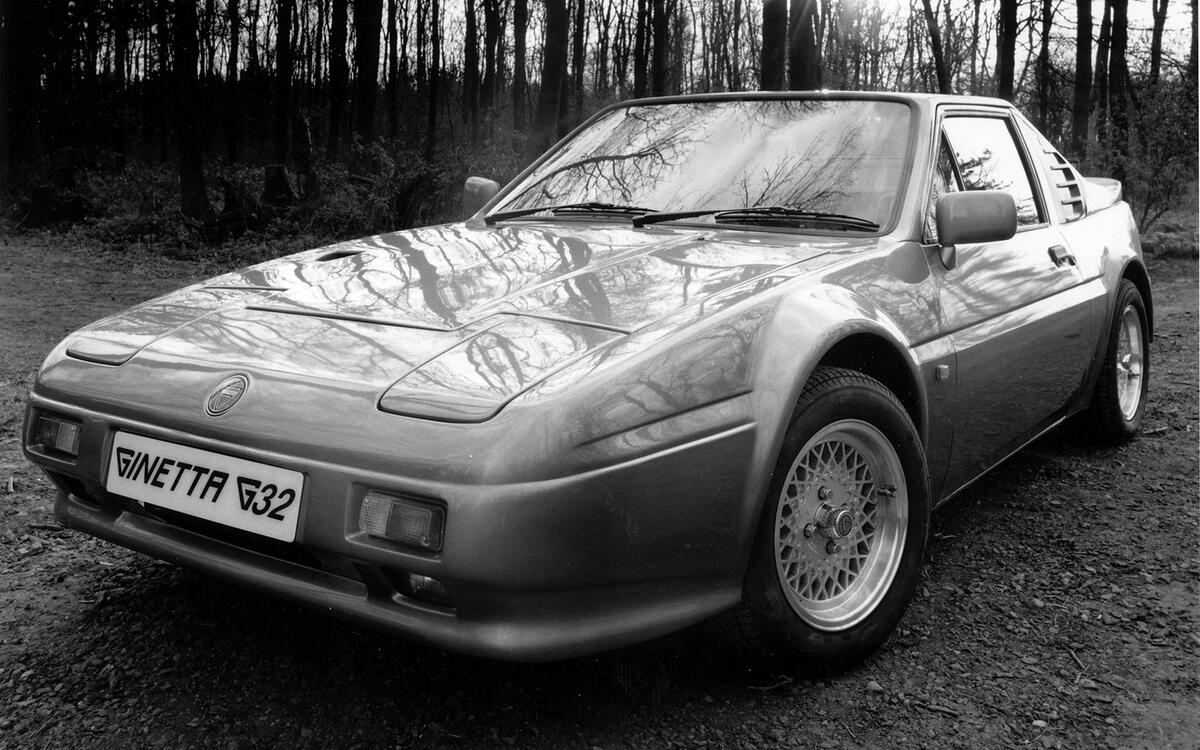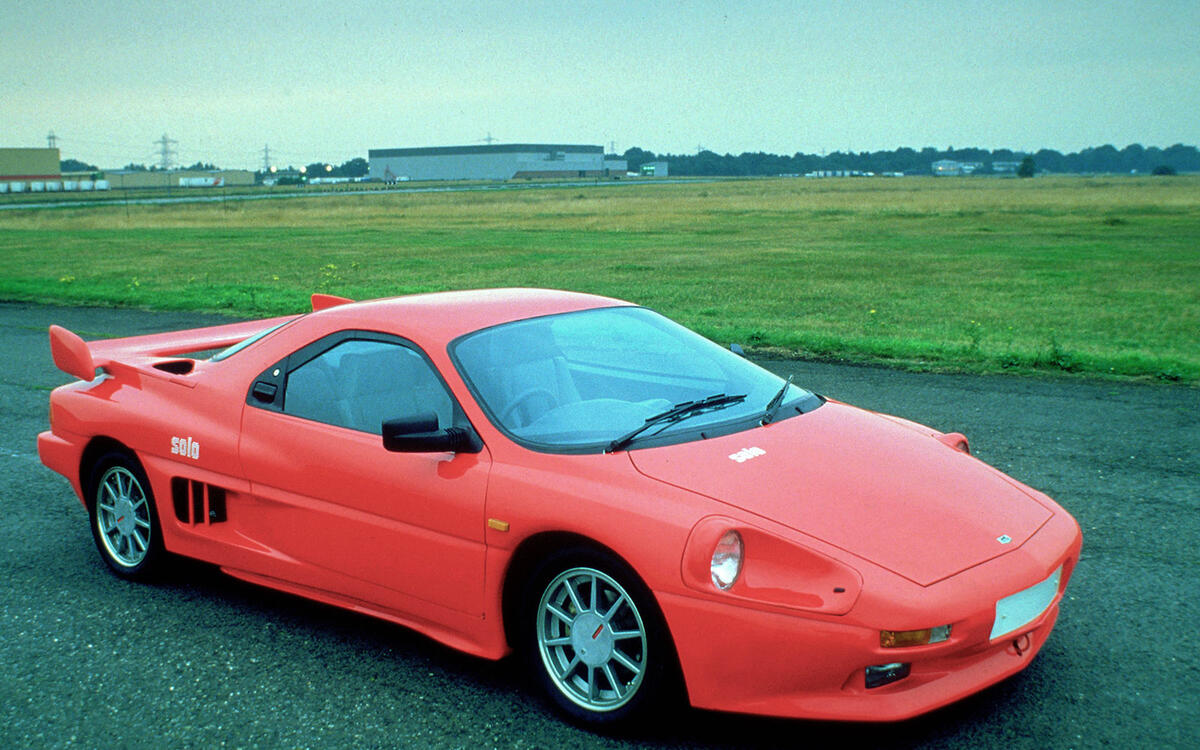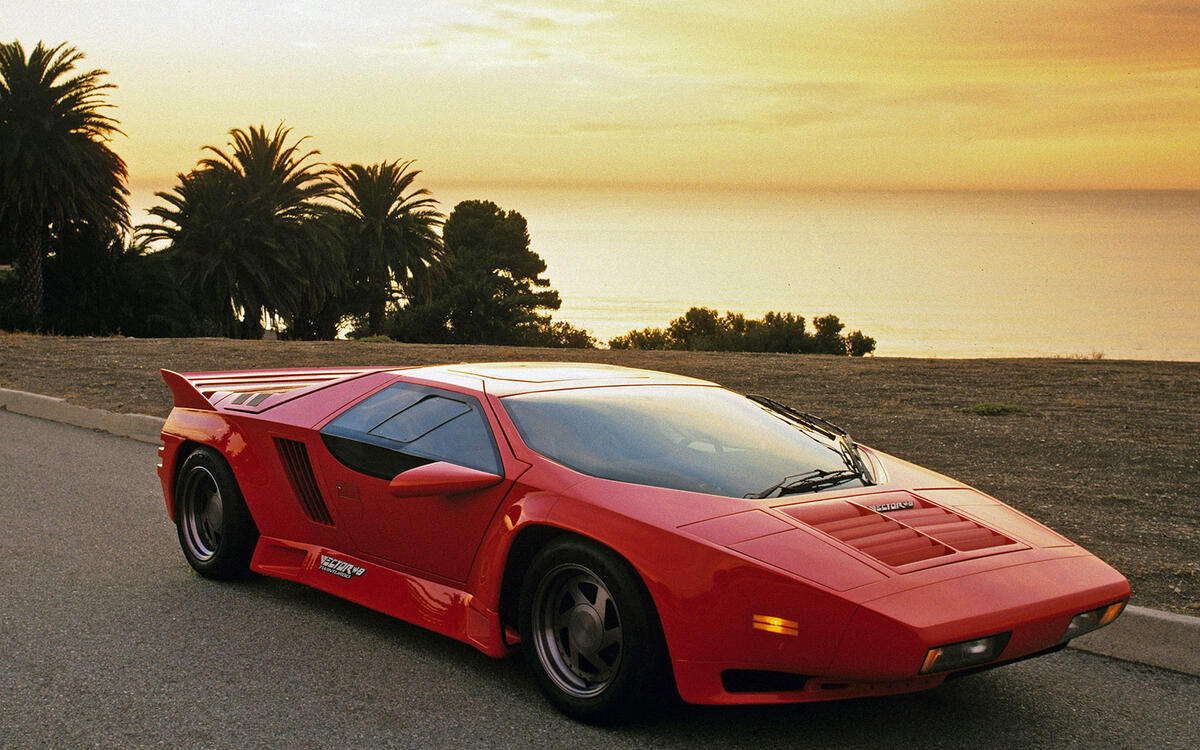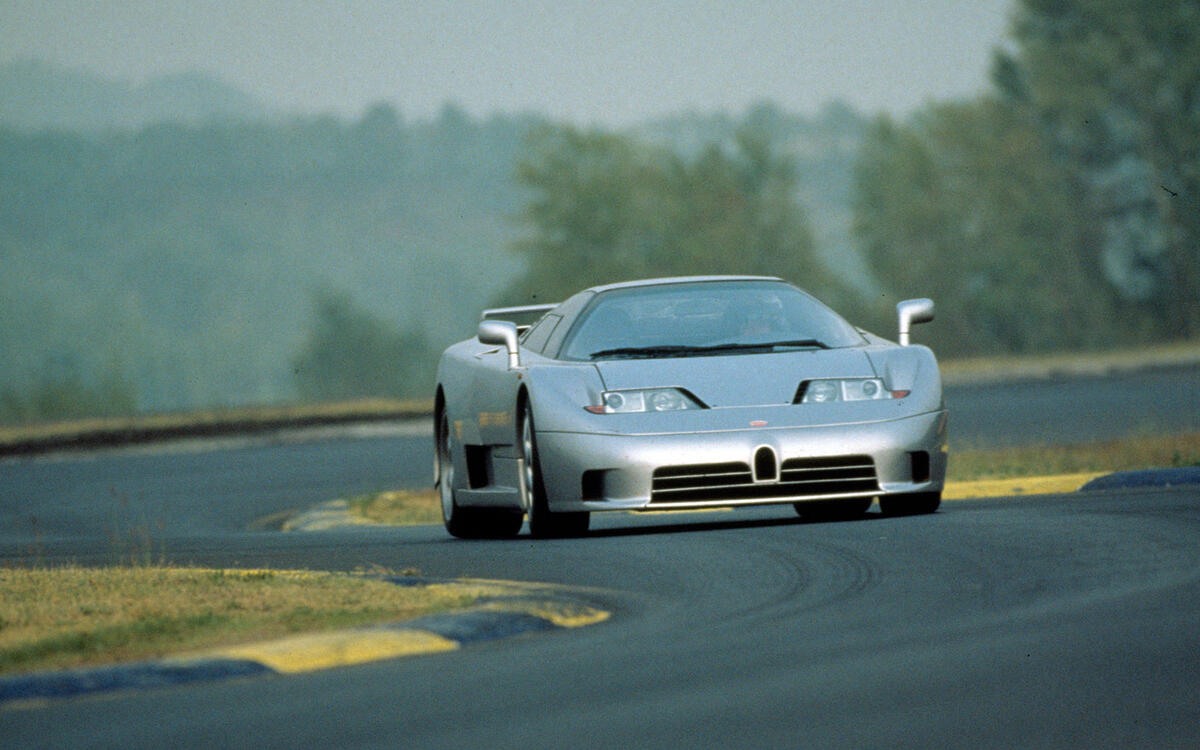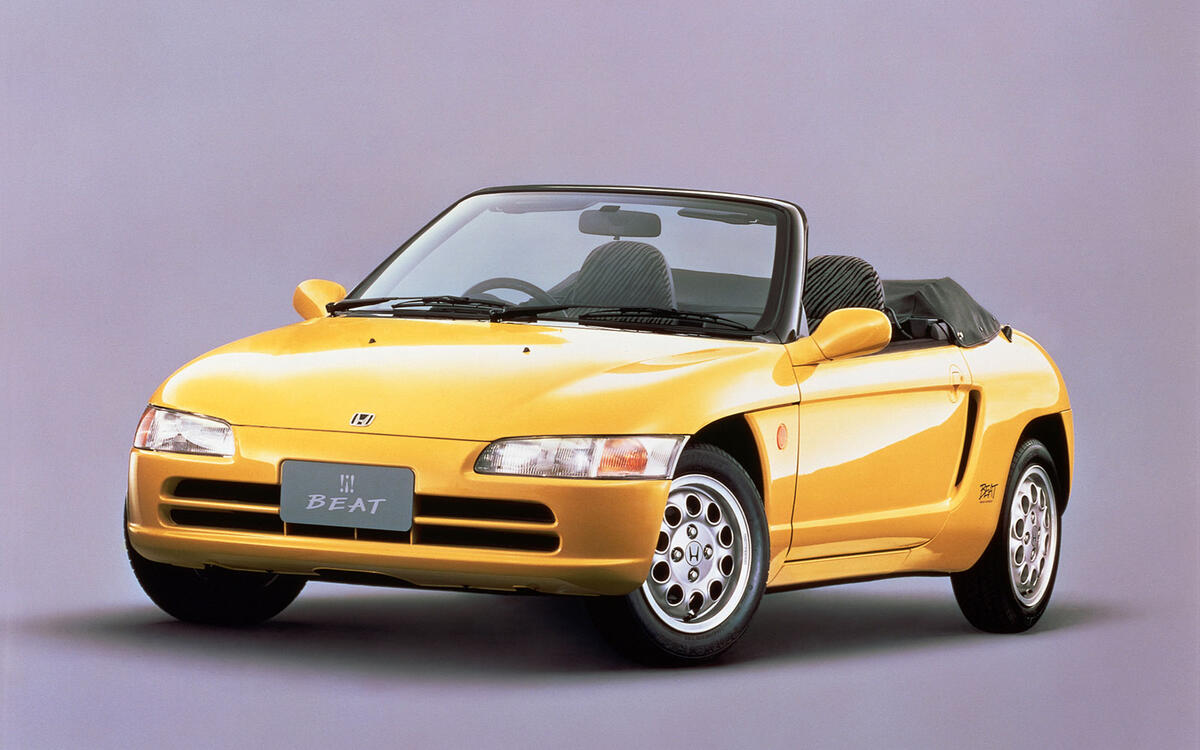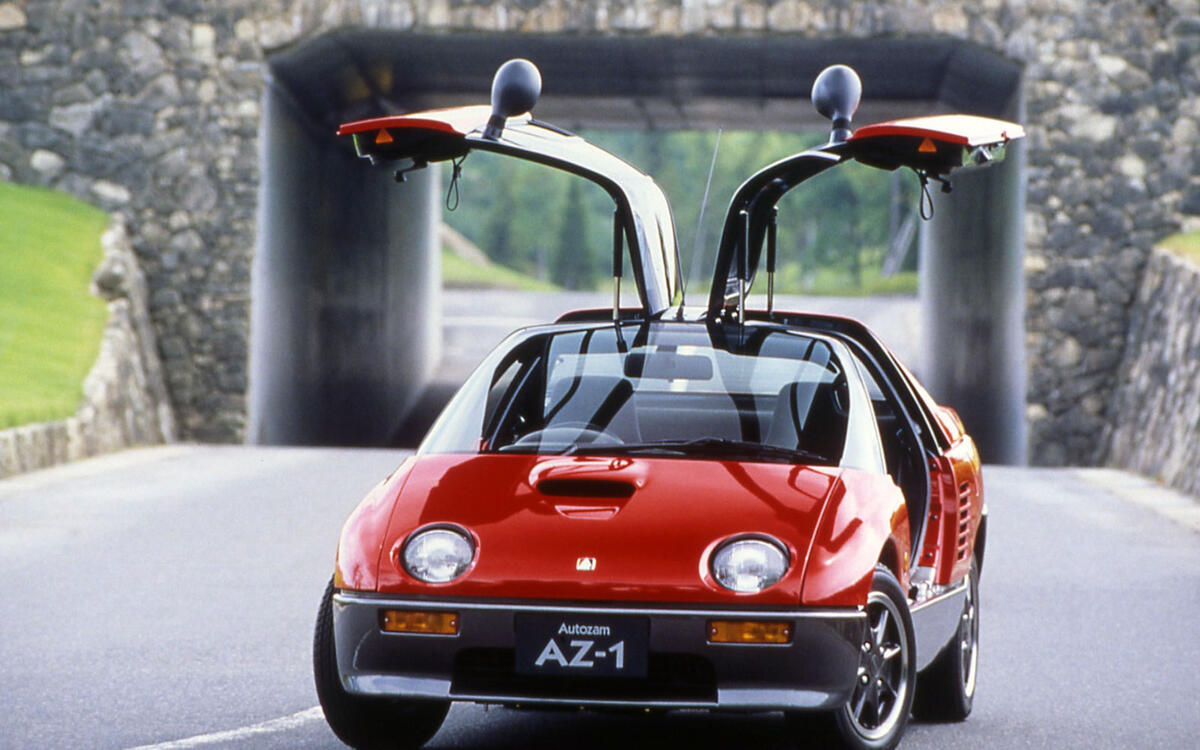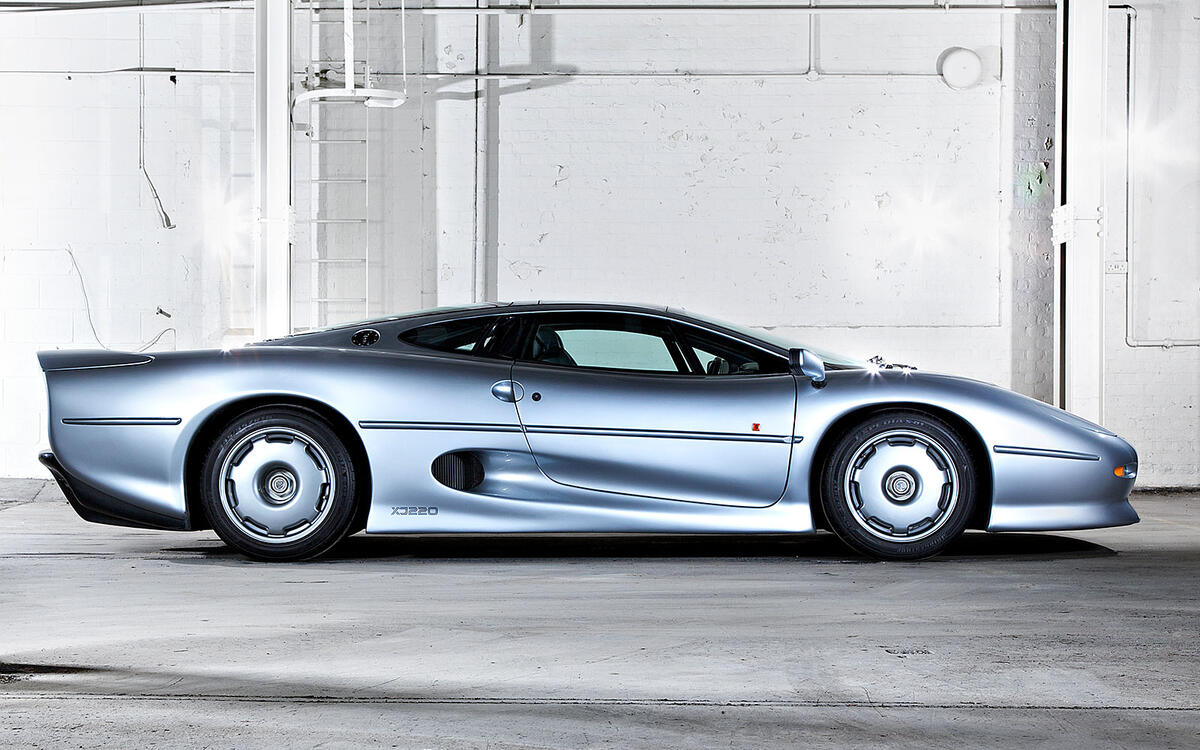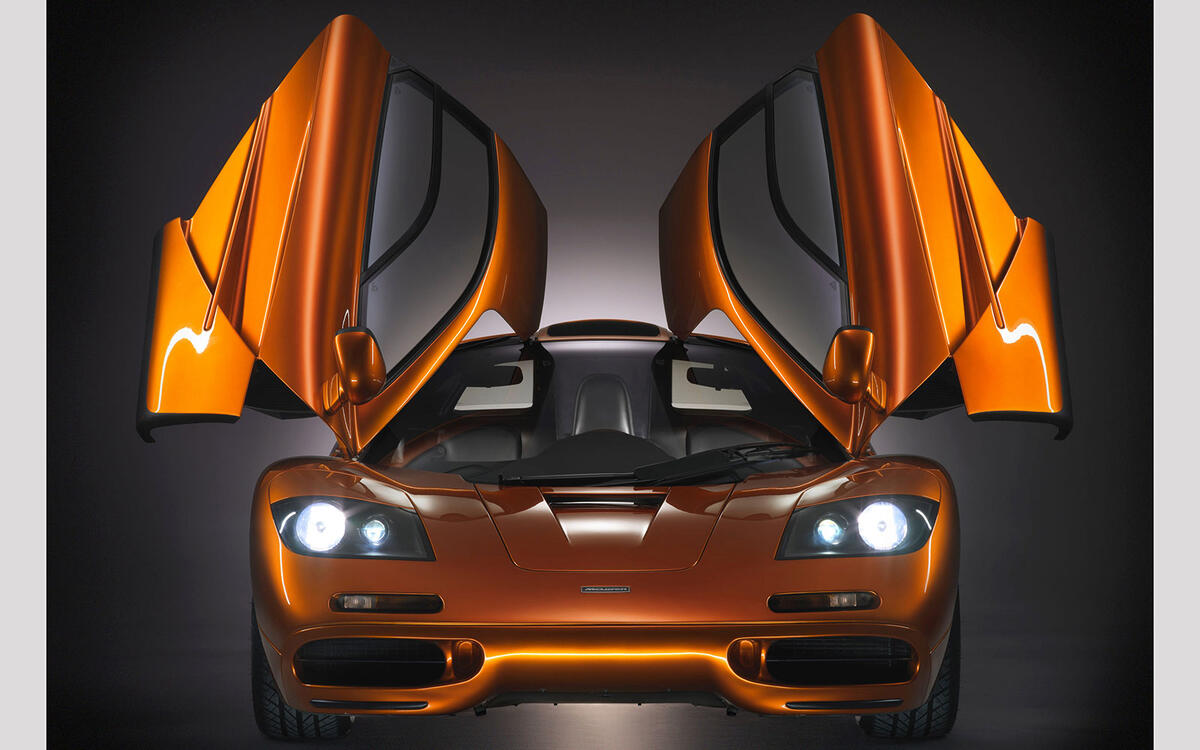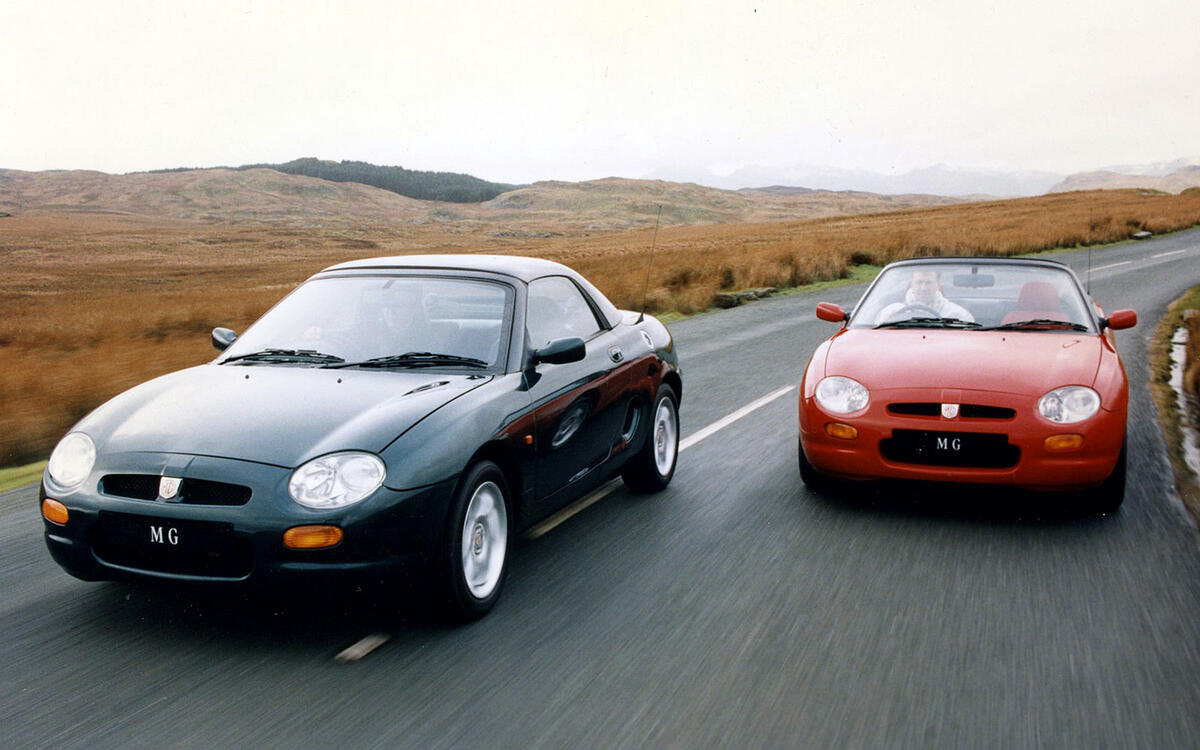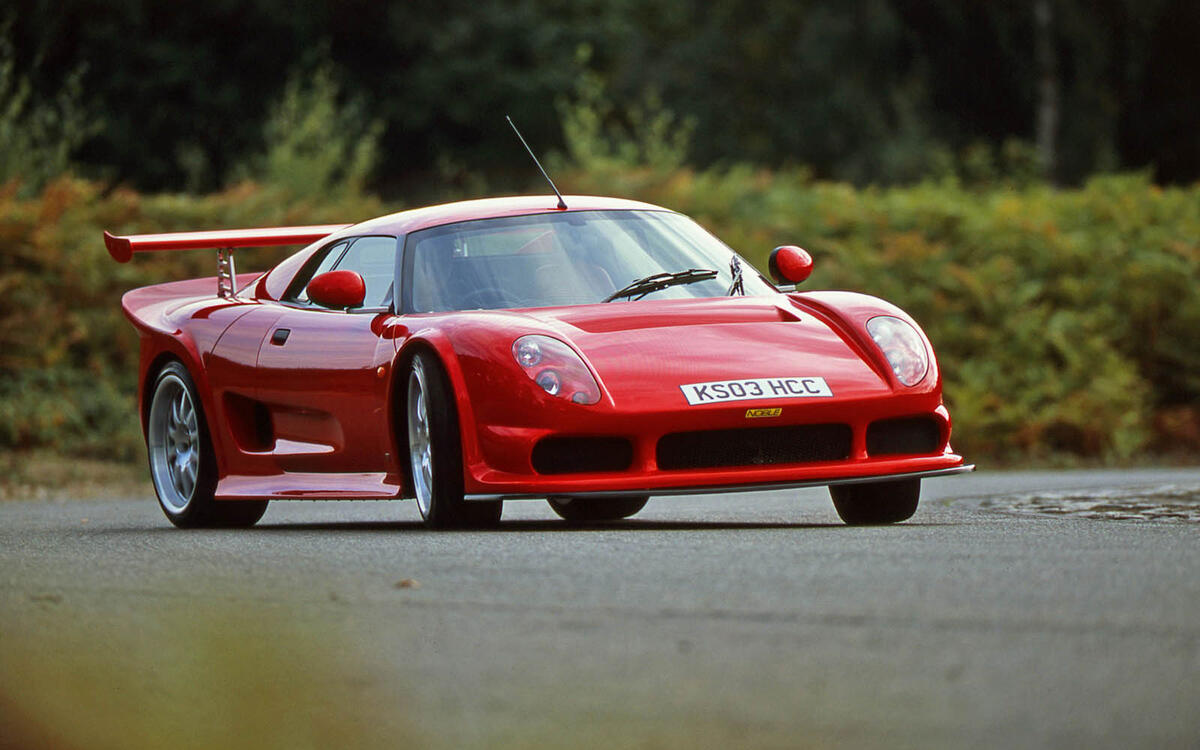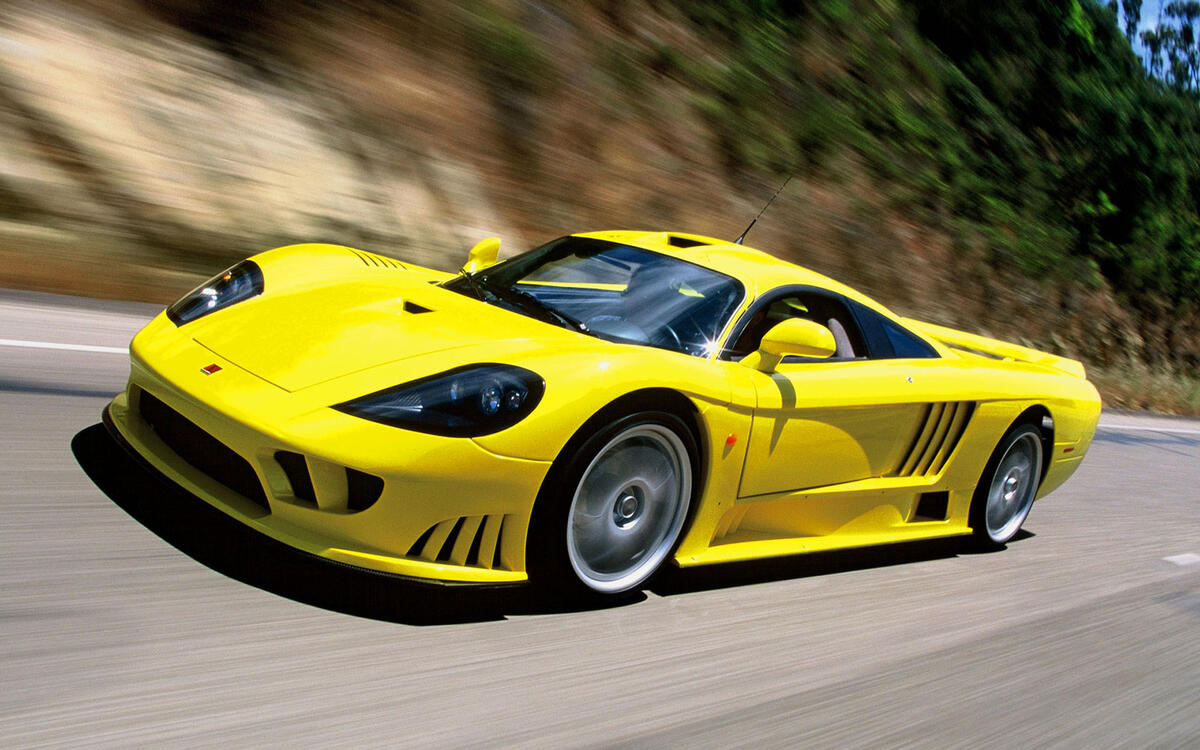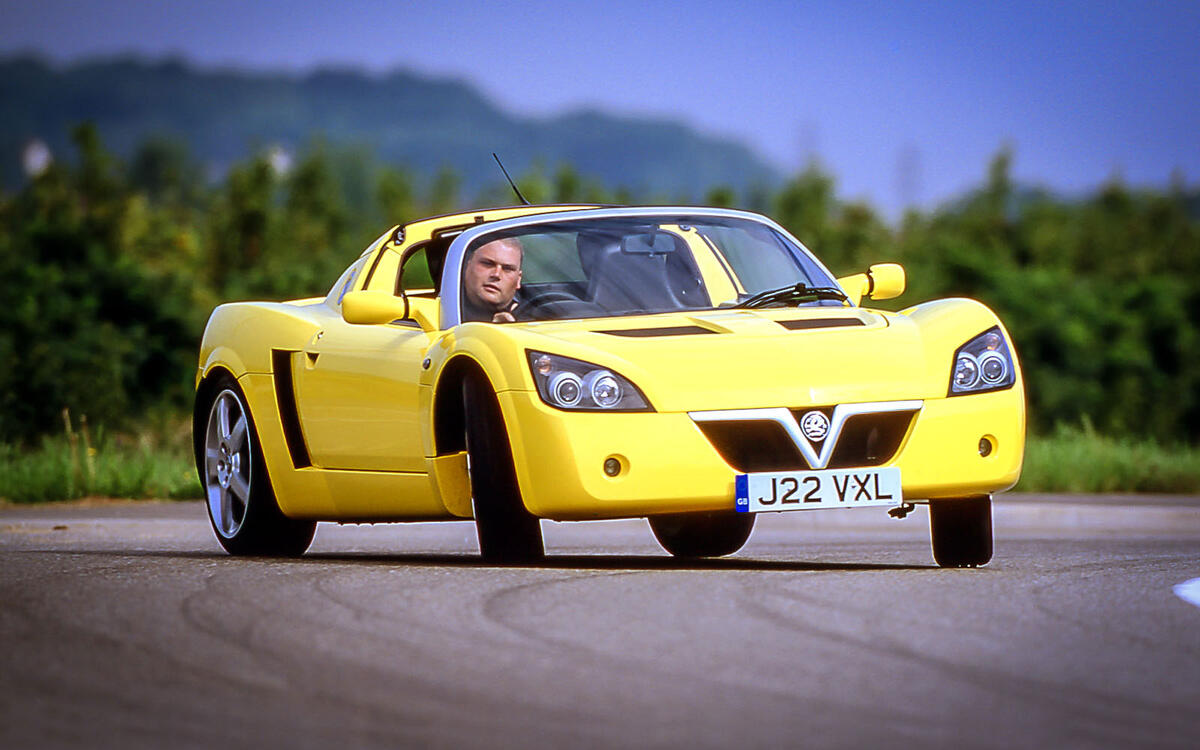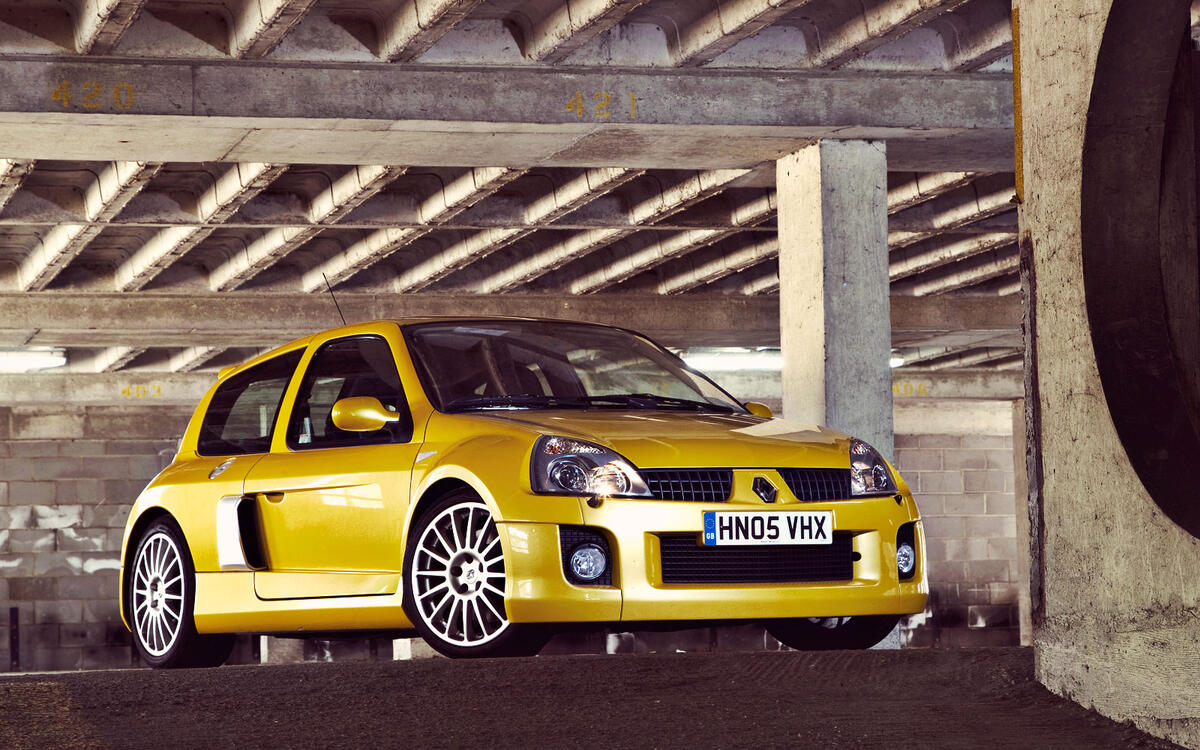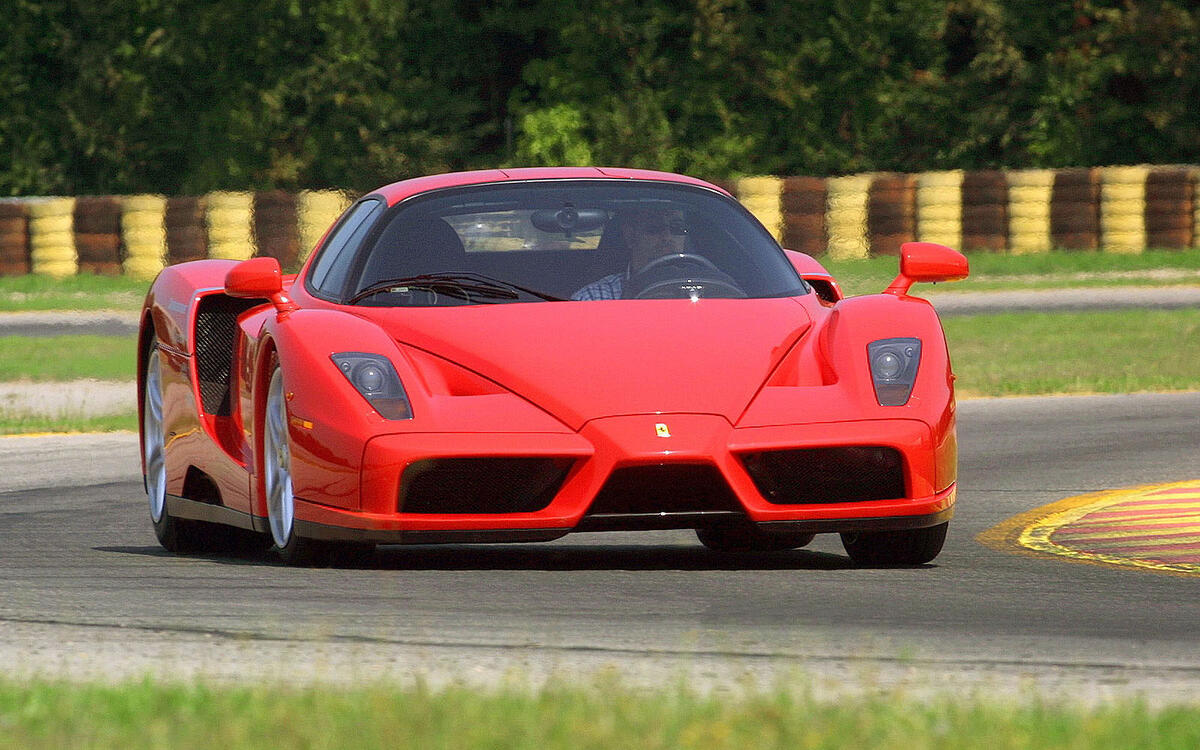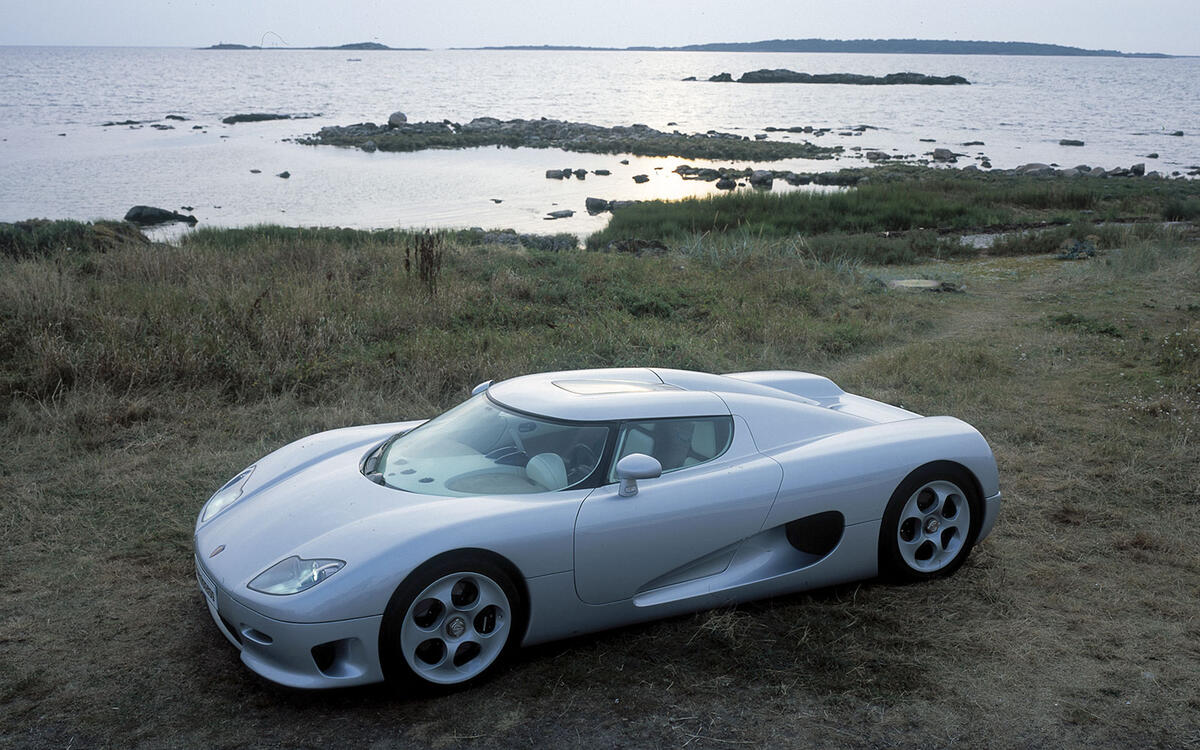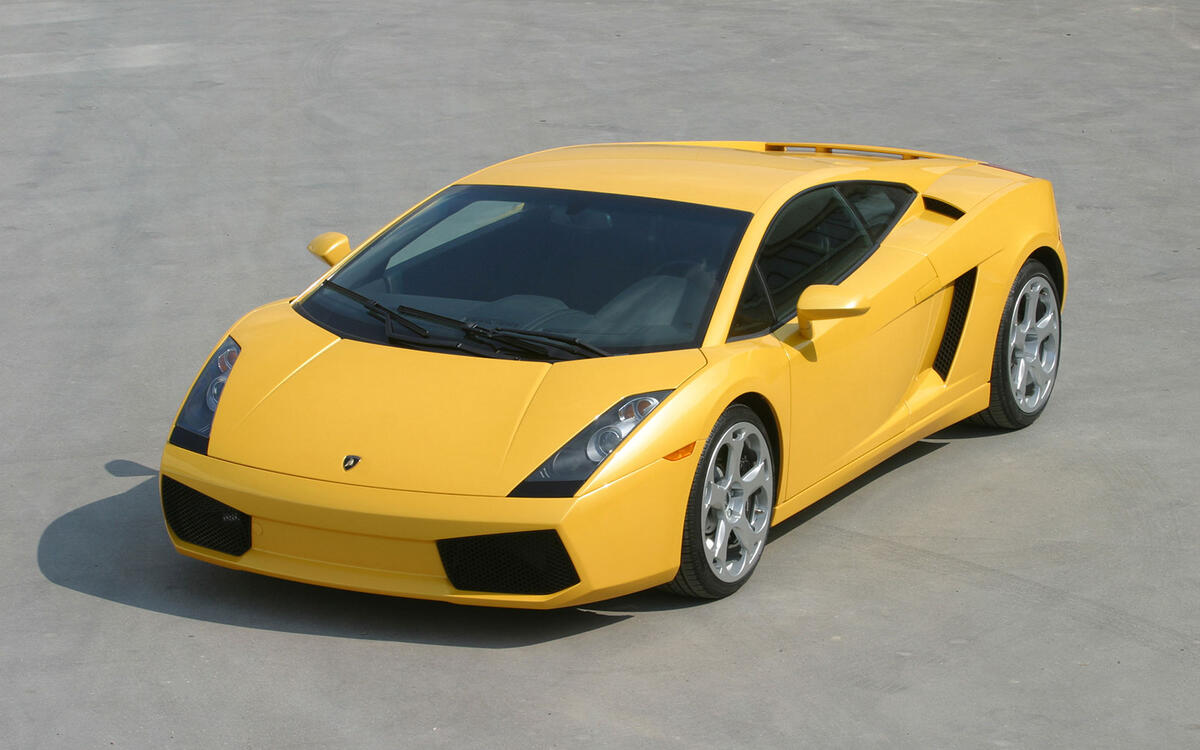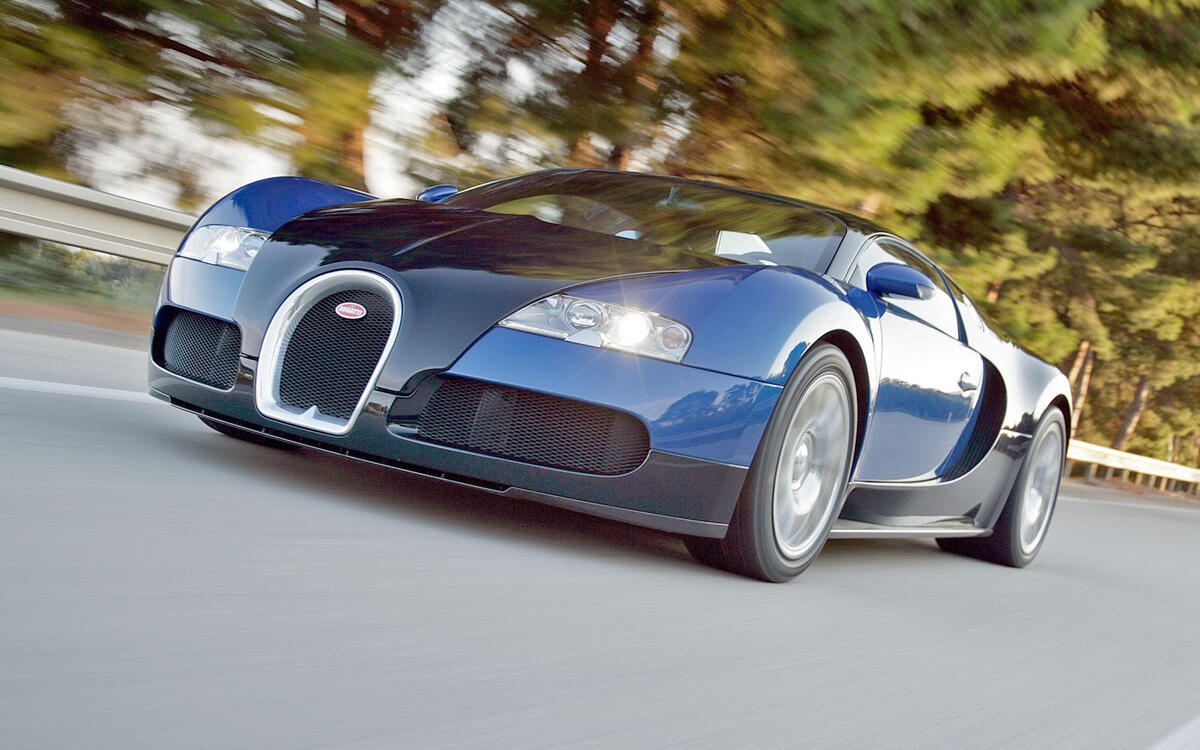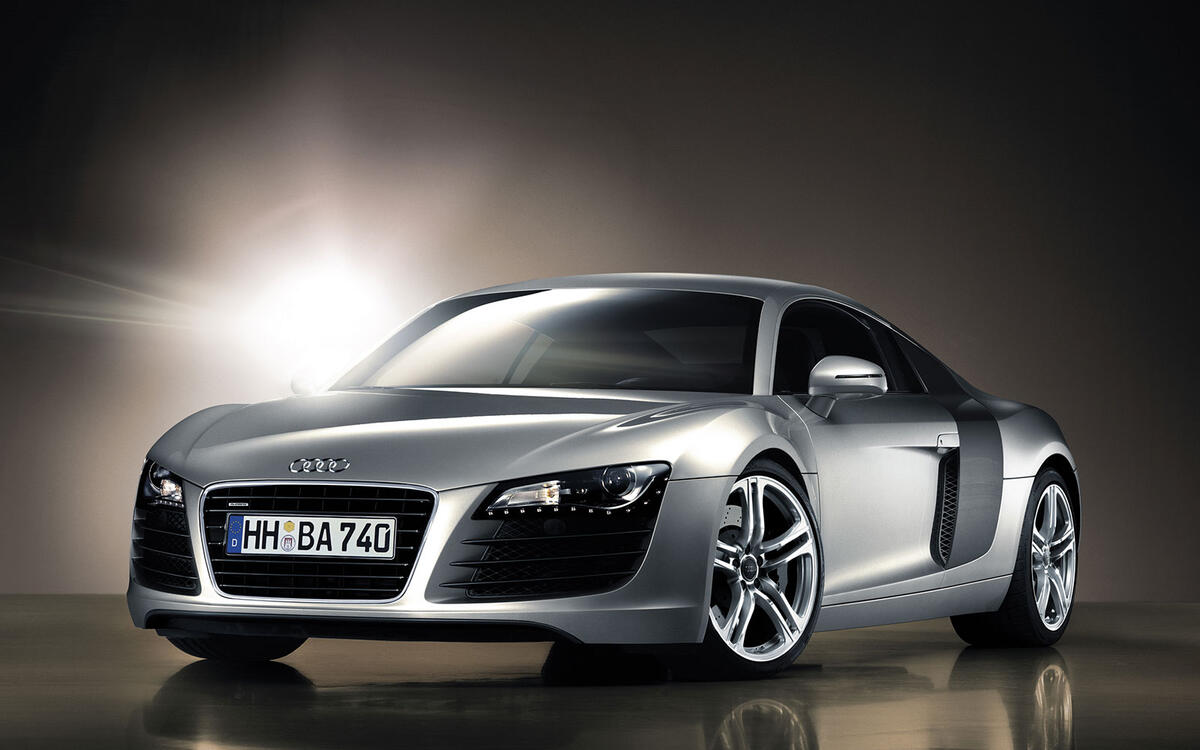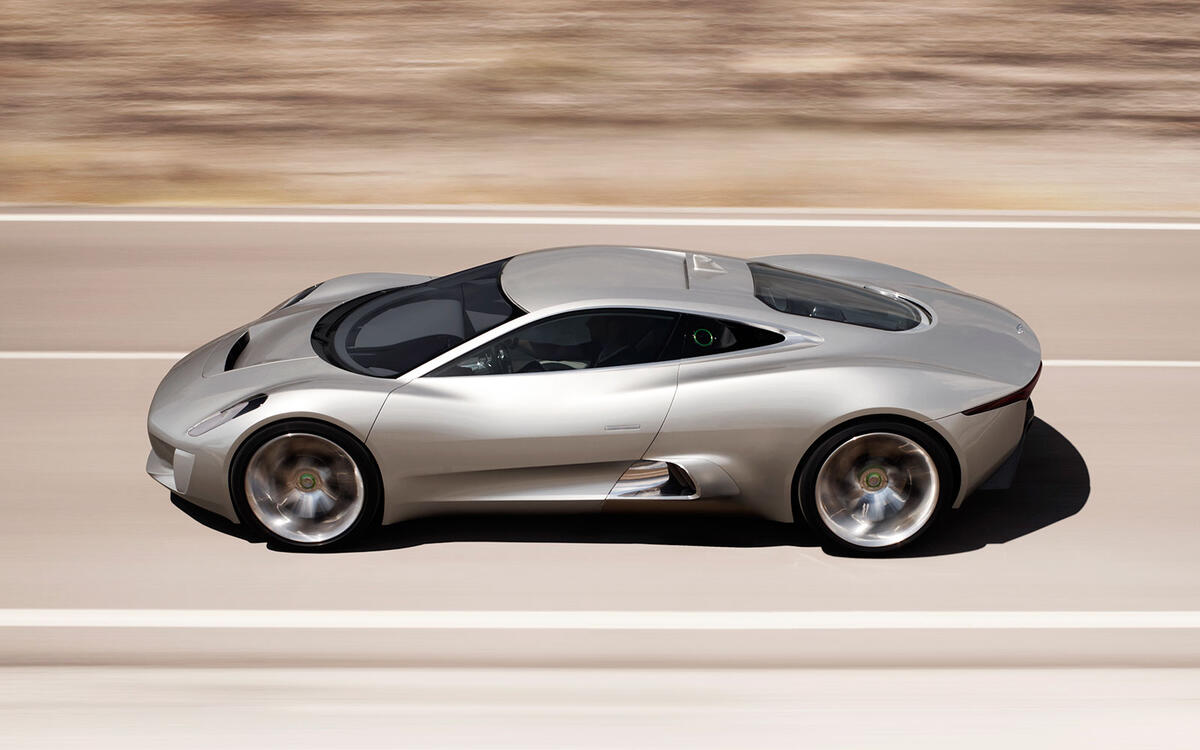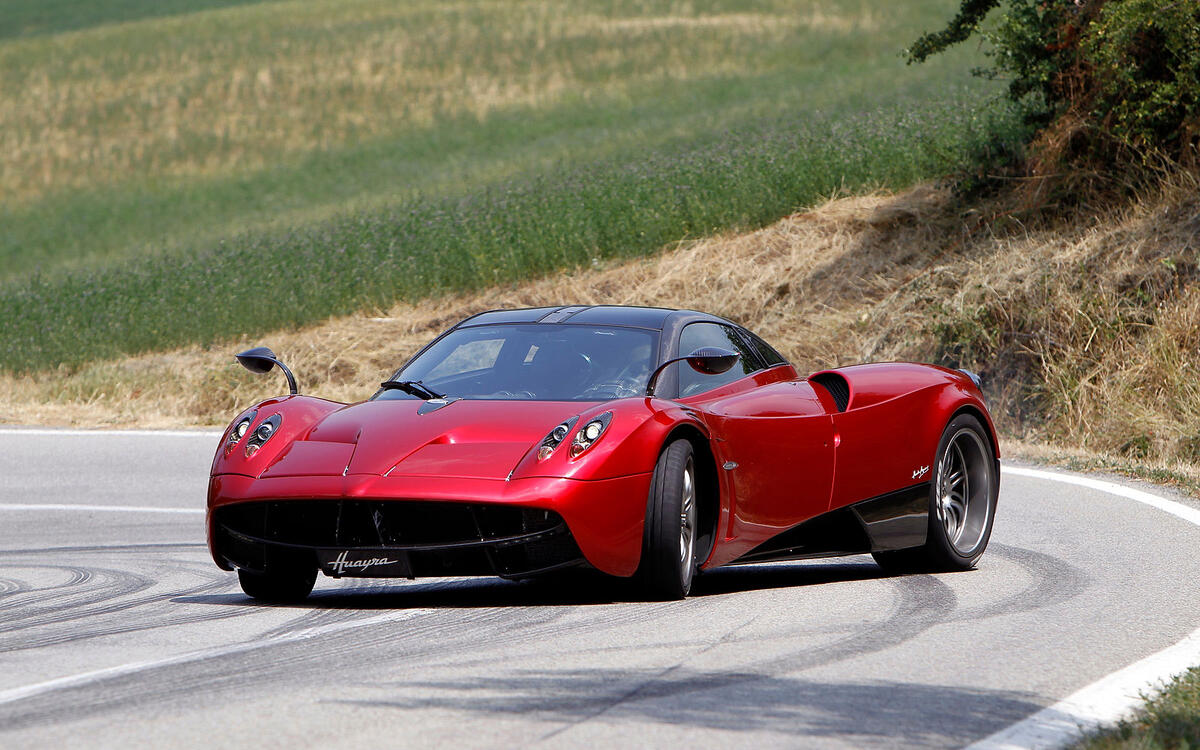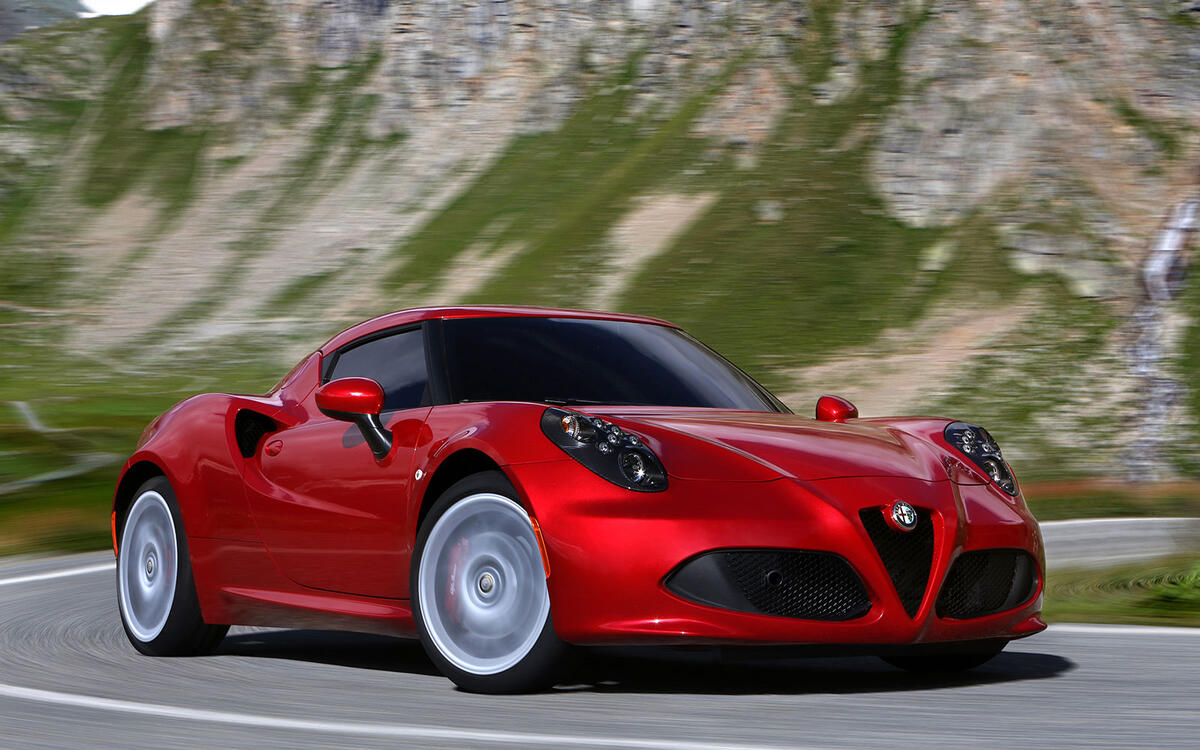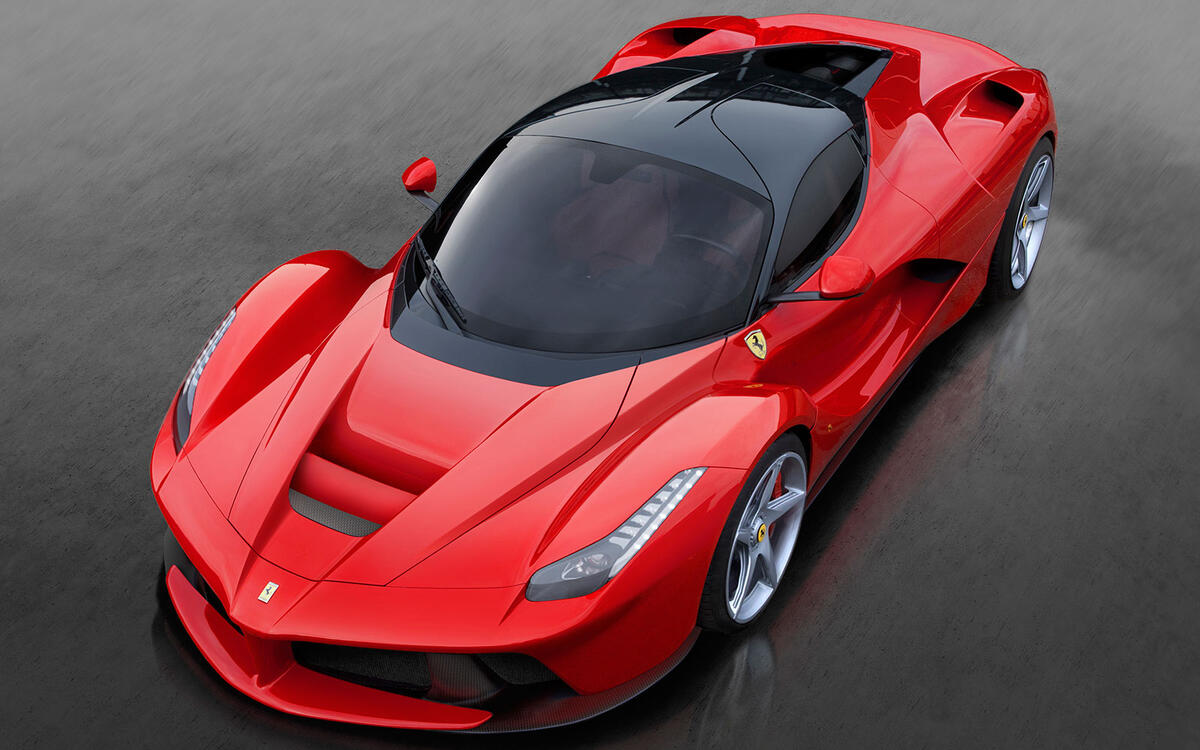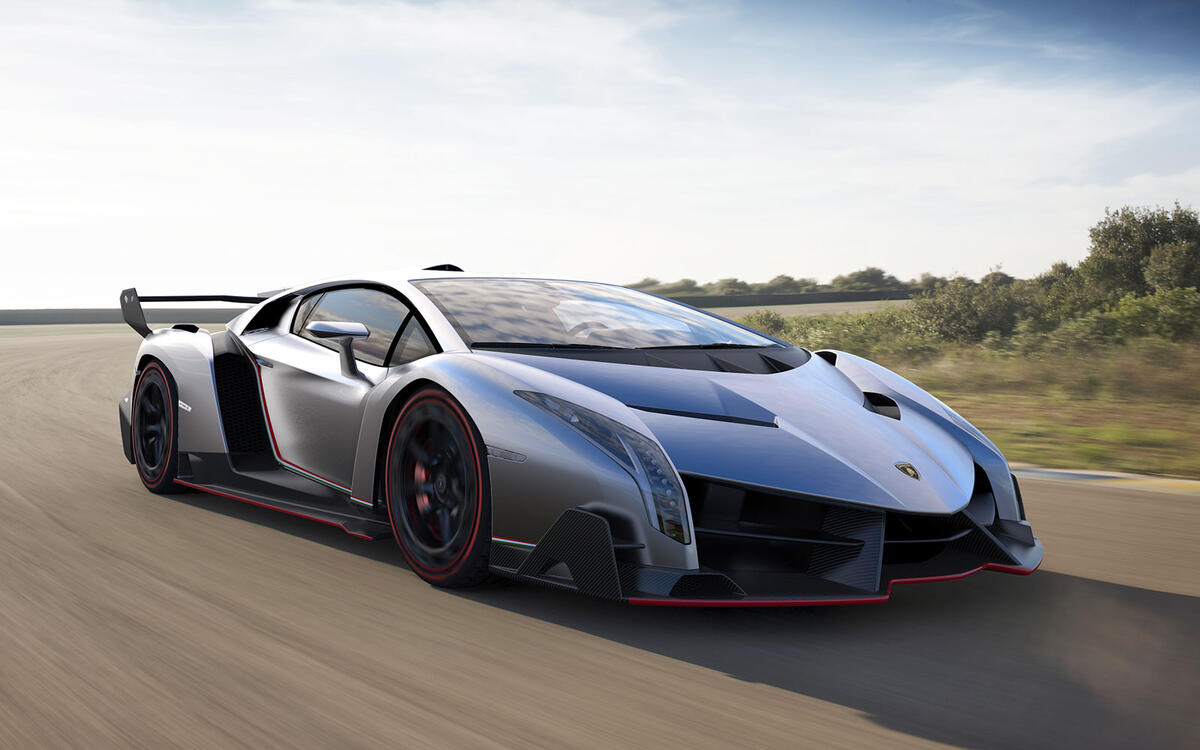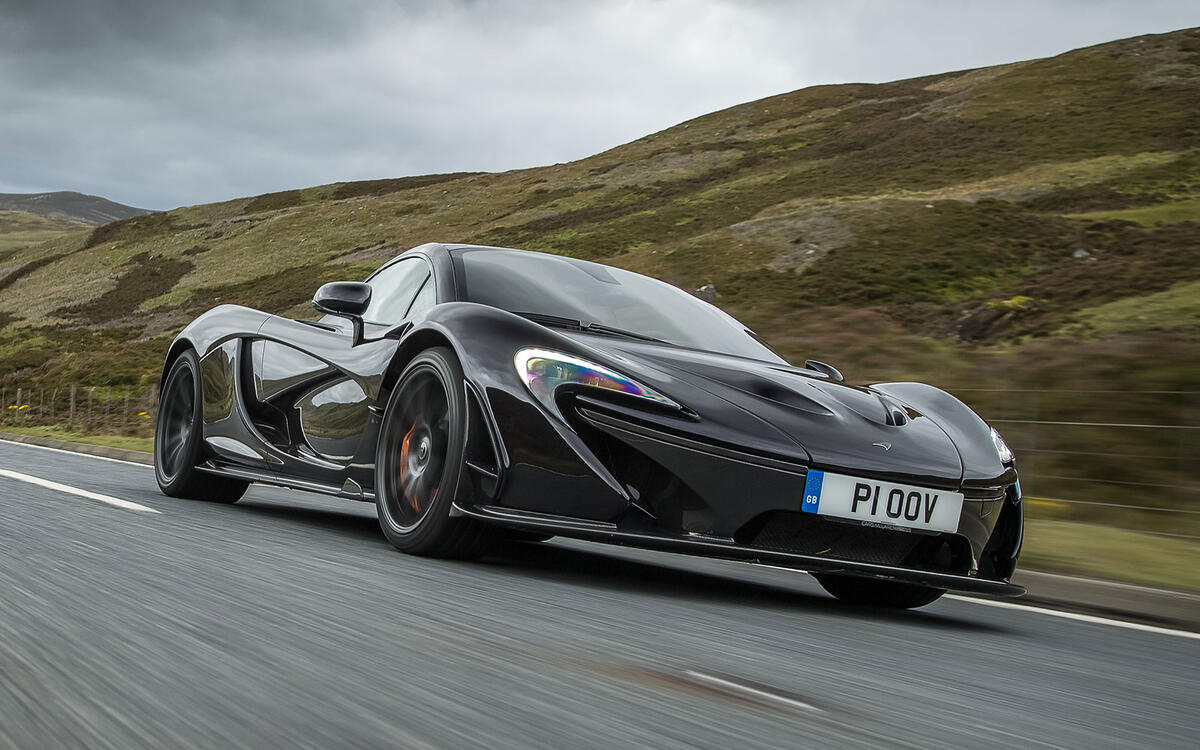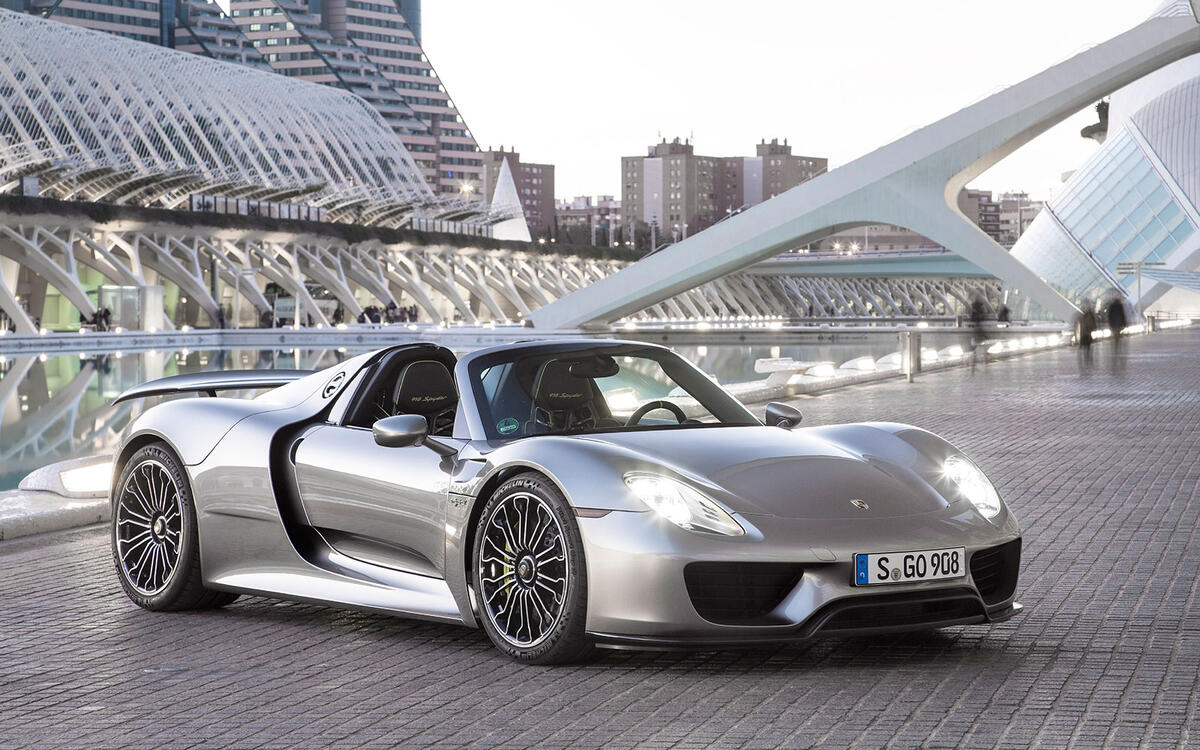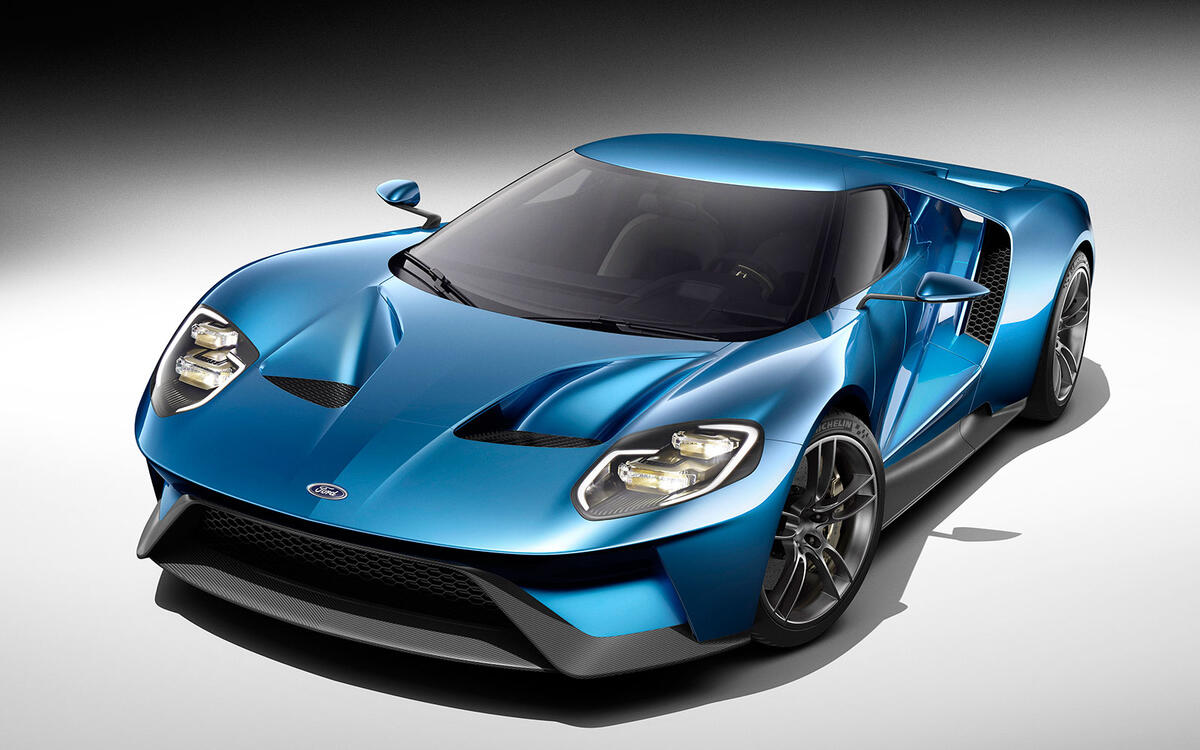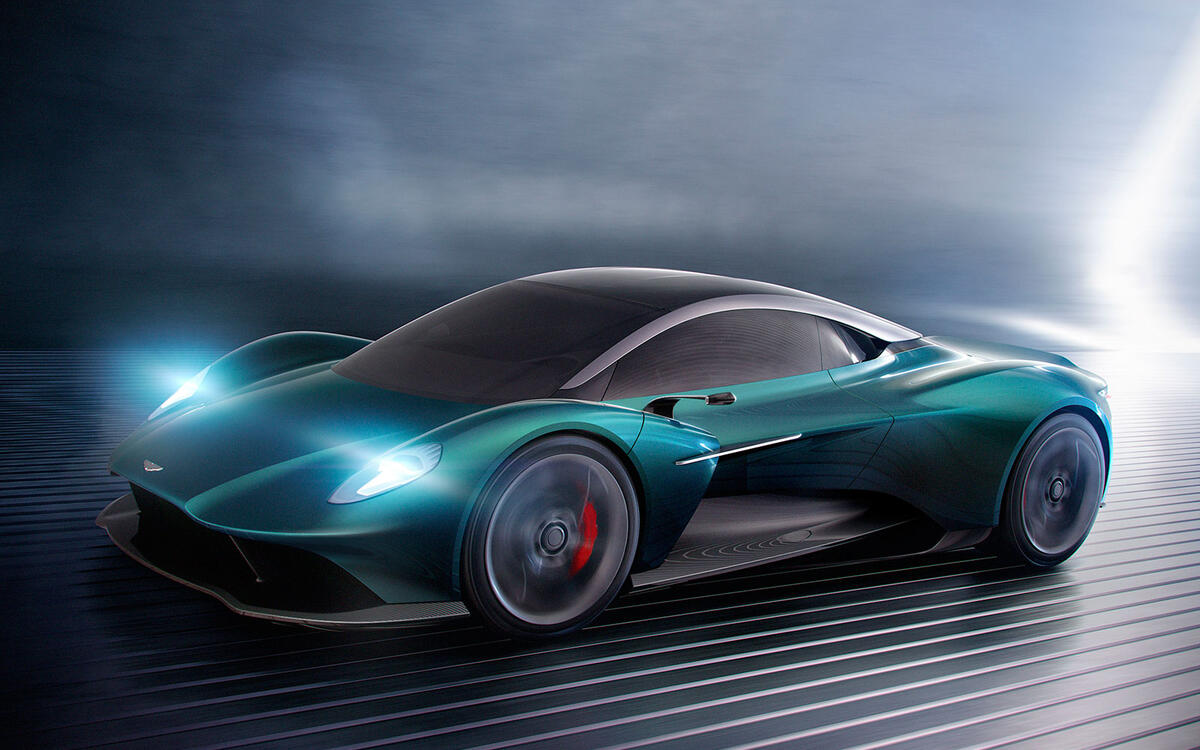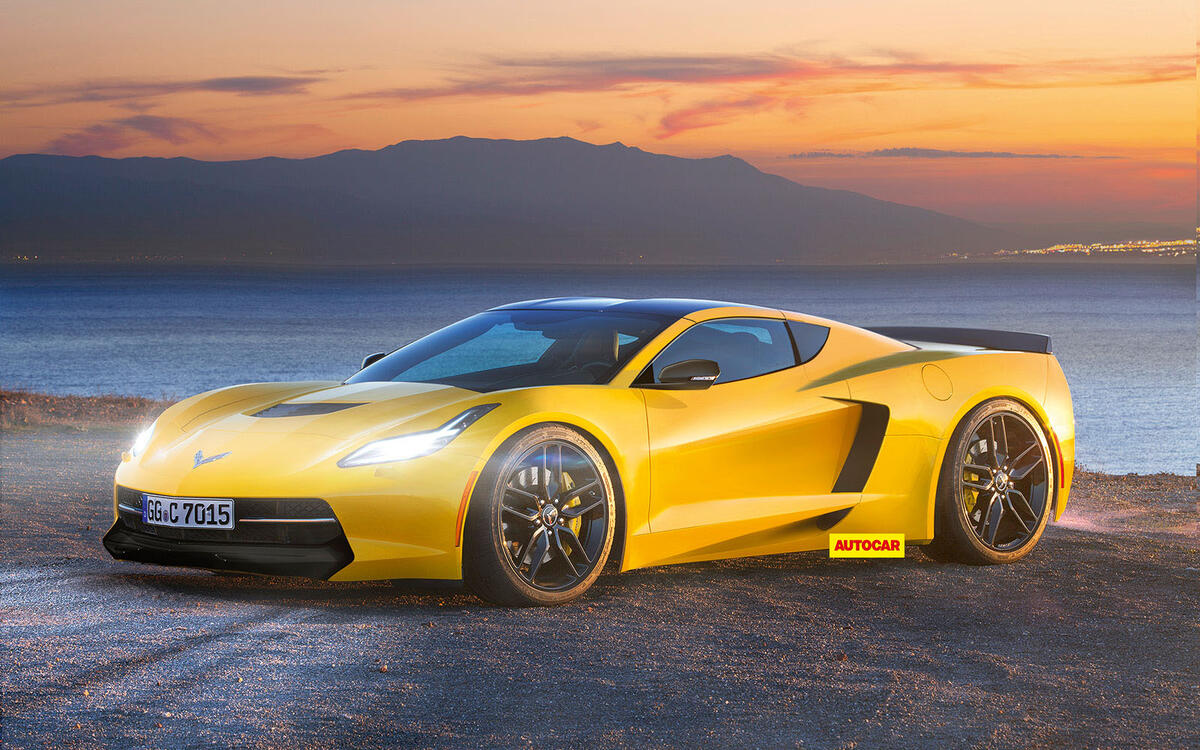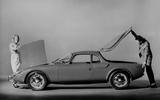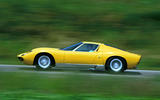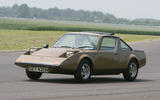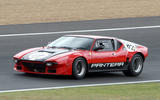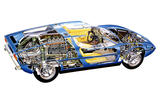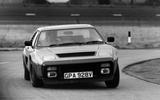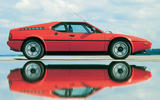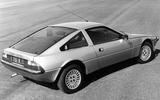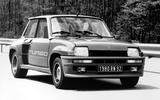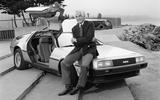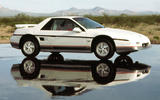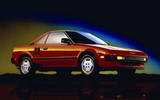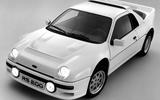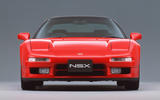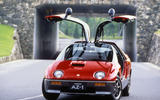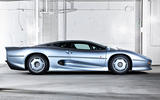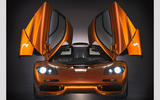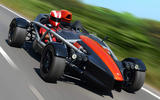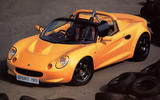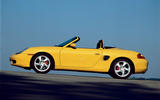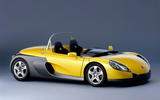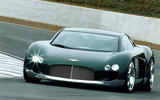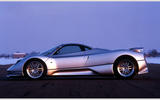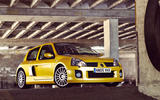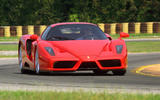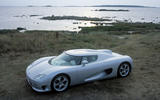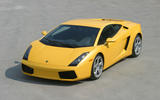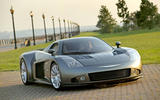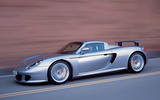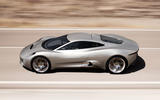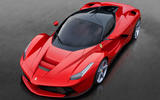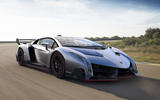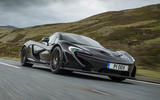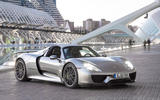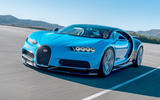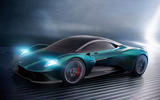 Slide of
Slide of
It would have been all too easy to fill a gallery of mid-engined cars with Ferraris, Lamborghinis and other assorted exotica.
But mid-engined doesn't have to mean unattainable, so here we bring you some of the landmark mid-engined cars since the first arrived in the early 1960s. Sure, there are a few exotics in here, but you'll also find affordable sportsters, intriguing rarities and even one or two concepts to remind you of what might have been.
And shortly that ultimate form of attainable sports car, the Chevrolet Corvette, will go mid-engined in production form for the first time as well. But let's start at the beginning:
 Slide of
Slide of
Bonnet Djet (1961)
The one that started it all; the world's first ever mid-engined road car. It used Renault running gear and was made by Matra, which took over the project when Bonnet couldn't pay its bills.
 Slide of
Slide of
De Tomaso Vallelunga (1964)
A mid-engined De Tomaso might sound exotic, but this 'supercar' packed nothing more pokey than a 1.5-litre Ford Cortina engine. The Vallelunga looked great but could manage just 112mph. Just 58 were made between 1965 and 1967.
 Slide of
Slide of
Ford GT40 (1965)
When Ford was thwarted in its attempt to buy Ferrari in 1963, it retaliated by creating a car that would thrash the Italian outfit at Le Mans – which the GT40 did no fewer than four times. A rather exciting looking film about it all, Ford v Ferrari, arrives later in 2019.
 Slide of
Slide of
Lamborghini Miura (1966)
When the prototype was unveiled at the 1966 Geneva motor show, Lamborghini reckoned it could sell maybe 20 examples of its Miura. Seven years later, 763 examples had been built, each with a 3929cc V12 in the middle.
 Slide of
Slide of
Unipower GT (1966)
The first affordable British mid-engined sportster, the Unipower featured Mini mechanicals and was beautfiully made, but it was too costly to survive and just 75 were produced in two years.
 Slide of
Slide of
Porsche 914 (1969)
Despised by Porsche afficionados but great to drive and very costly when new, the 914 was fitted with a tuned VW 411 powerplant that displaced 1.7, 1.8 or 2.0 litres – a few were fitted with a 2.0-litre flat-six from the Porsche 912. Over 100,000 Porsche 914s were made.
 Slide of
Slide of
Clan Crusader (1971)
With its rev-happy Hillman Imp engine and lightweight glassfibre bodywork, the Crusader was fast and economical – but it also cost about 40 per cent more than an MG Midget. Despite this, 315 were built before the company went belly up.
 Slide of
Slide of
De Tomaso Pantera (1971)
With its 5.8-litre Ford V8, this is the relatively affordable Italian supercar. But like most of its ilk, the Pantera (Italian for Panther) was shockingly badly built, although it still looks fabulous. More than 7000 were made in a 21-year production run.
 Slide of
Slide of
Maserati Bora (1971)
Designed and built at a time when Citroen owned Maserati, this was the company's first mid-engined car. Styled by Giorgetto Giugiaro, the car looked great but never sold especially well; between 1971 and 1978 just 571 were sold.
 Slide of
Slide of
Fiat X1/9 (1972)
Arguably the first affordable mid-engined sportster, the X1/9 was designed by Bertone and used Fiat 128 running gear. That initially meant a 1.3-litre engine and a top speed of just 99mph; from 1978 a 1.5-litre unit was fitted.
 Slide of
Slide of
Ferrari Boxer (1973)
Stung by the phenomenal success of Lamborghini's Miura, Ferrari had to retaliate with this, its first mid-engined 12-pot. With a 4.4-litre flat-12, Ferrari claimed the Boxer could do 170mph; from 1976 a 4.9-litre engine was fitted.
 Slide of
Slide of
Lancia Stratos (1973)
After Lancia's competition director Cesare Fiorio saw Bertone's wedge-shaped Stratos Zero concept at the 1970 Turin salon there was no turning back. This 2.4-litre V6-powered homologation special was the result and it proved massively successful in rallying.
 Slide of
Slide of
Lamborghini Countach (1974)
Has any supercar ever looked more dramatic than the Countach? Named after a Piedmontese exclamation, this V12-powered behemoth survived 16 years of production, with 1997 made.
 Slide of
Slide of
Lancia Montecarlo (1975)
The Lancia Beta might not seem like the most promising start point for a mid-engined budget sports car, but the Montecarlo (or Scorpion in the US) was actually rather fun. With zesty 1.8 or 2.0-litre four-cylinder engines the Montecarlo was perky, handled well and looked neat. Both coupé and spyder editions were offered.
 Slide of
Slide of
Lotus Esprit (1976)
The second mid-engined Lotus (after the Europa), the Esprit would become an icon thanks to James Bond. Originally penned by Giugiaro, the Esprit was refreshed by Peter Stevens in 1987, with softer lines.
 Slide of
Slide of
AC 3000ME (1978)
The ME stood for mid-engined – the first car in AC's history to feature such a configuration. But the gestation was protracted and the car was outdated by the time it arrived; it failed dismally with production running to just 100 or so examples.
 Slide of
Slide of
BMW M1 (1979)
The first car to come from BMW's M Division and also the first mid-engined car ever to come out of BMW. Power was provided by BMW's classic 3453cc straight-six, pushing out 277bhp. Between 1979 and 1980 456 BMW M1s were built; now they're hugely sought after.
 Slide of
Slide of
Matra Murena (1980)
First came the Bagheera, then the Murena, which was effectively an update of the earlier car. Both featured an unusual three-abreast seating layout; Murena power was courtesy of Renault.
 Slide of
Slide of
Renault 5 Turbo (1980)
There would be a sequel in 1983, called the Turbo 2, but this is the original homologation special from 1980. Renault created the Turbo for rallying but road cars were made too; in all 1820 R5 Turbos left the factory, each powered by a 158bhp turbocharged 1397cc four-cylinder engine.
 Slide of
Slide of
De Lorean DMC-12 (1981)
With its stainless steel bodywork, gull-wing doors and 2849cc Renault-sourced V6 engine, the DMC-12 looked promising. But then De Lorean was rocked by scandal and it was all over after just one year, with 8353 cars made.
 Slide of
Slide of
Pontiac Fiero (1983)
American companies have generally shied away from producing mid-engined cars, so the Pontiac Fiero was a big statement from the usually very conservative General Motors. Although 370,000 were made in a five-year production run, the car was heavily criticised in period for its poor dynamics, build quality and safety record.
 Slide of
Slide of
Toyota MR2 (1984)
Once the MGB had died, Fiat had the affordable sportster market sewn up with its X1/9. Then came the MR2, with its rev-happy 1.6-litre twin-cam engine, superb reliability and brilliant chassis. There would be three iterations of the MR2 between 1984 and 2005, with the original arguably the best.
 Slide of
Slide of
Ford RS200 (1985)
Powered by a turbocharged 1.8-litre BDT engine, the RS200 was a Group B special that came in roadgoing form with 250bhp, while competition versions boasted up to 650bhp. It could have shone on the rally stage, but the series was canned before the RS200 got into its stride.
 Slide of
Slide of
Nissan Mid-4 (1985)
Nissan produced a mid-engined four-wheel drive supercar proposal in 1985, and then another in 1987, both with twin-turbo 3-litre V6 power. To complete the hat-trick a third iteration was produced with a 4.5-litre V8. Then came the recession…
 Slide of
Slide of
MG Metro 6R4 (1986)
You'd struggle to find much Metro in there (just the headlights, dash and doors were carried over) but there was plenty of Group B rally car. Phenomenally fast, around 200 Metro 6R4s were built, some of which were 250bhp road cars; the racers got 380bhp.
 Slide of
Slide of
Ferrari F40 (1987)
Possibly the greatest Ferrari ever and a seminal supercar, this was the last Maranello machine to be developed and unveiled before Enzo Ferrari died. It celebrated 40 years of the company and thanks to its 478bhp twin-turbo V8 it was the first Ferrari capable of cracking 200mph.
 Slide of
Slide of
Ginetta G32 (1989)
Ginetta had made rear-engined cars before, but this was the company's first stab at one with its powerplant in the middle. There was Ford 1.6 CVH power to give 120mph, while buyers could choose between coupé or convertible editions.
 Slide of
Slide of
Panther Solo 2 (1989)
Panther's original plan with the Solo was to create an affordable mid-engined two-seater to launch around 1985. Then Toyota introduced the MR2, forcing Panther to move upmarket. It proved to be a bad move with just a dozen or so cars made before bankruptcy beckoned.
 Slide of
Slide of
Vector W8 (1989)
The story of Gerry Wiegert and his company Vector Aeromotive is worthy of a film. Founded in 1978, Vector built just 22 cars between 1989 and 1993. The company was sold soon after but Wiegert would go on to buy it back and is still working on a new hypercar with a claimed 1850bhp.
 Slide of
Slide of
Honda NSX (1990)
Honda took the mid-engined supercar concept and made it work, with a design that offered reliability, usability and amazing performance. Better to drive than the contemporary Ferrari 348, few NSXs were sold as buyers were put off by those Honda badges.
 Slide of
Slide of
Bugatti EB110 (1991)
With a 60-valve, quad-turbo V12 powering all four wheels through a six-speed gearbox, this 542bhp monster was mind-blowing. But it was massively costly too, so just 139 were made before the company went bust.
 Slide of
Slide of
Honda Beat (1991)
Proving that the best things can come in small packages, the Honda Beat was a kei car with a mid-mounted turbocharged 656cc three-cylinder engine. It was a hoot to drive, looked great and was affordable, and over five years of production more than 33,000 were made.
 Slide of
Slide of
Autozam AZ-1 (1992)
Another kei car, but unlike the open-topped Honda Beat the Autozam AZ-1 was a coupé with gull-wing doors. Autozam was a subsidiary of Mazda, which licensed the AZ-1 to Suzuki, which would then produce its own version called the Cara.
 Slide of
Slide of
Jaguar XJ220 (1992)
Originally unveiled as a V12-engined four-wheel drive concept, the production XJ220 featured a twin-turbo V6 and rear-wheel drive. It could still crack 210mph though, thanks to packing 542bhp, but just 274 were made.
 Slide of
Slide of
McLaren F1 (1992)
It seems like we'll never see its kind again; no road car has ever been less compromised than this. Just 106 examples of this 240mph 627bhp car were built, of which only 64 were road cars. Each was powered by a BMW-sourced naturally aspirated V12.
 Slide of
Slide of
MG F (1995)
MG's first mid-engined road car, we got a preview of the F over a decade earlier in the EX-E concept. Perky and fun, the F proved affordable and even better when relaunched as the TF, with steel suspension in place of the original Hydragas.
 Slide of
Slide of
Ariel Atom (1996)
Very much created in the mould of the Lotus 7, the Ariel Atom is a no-holds-barred performance machine that puts driving fun ahead of all other considerations. The original Atom featured a naturally aspirated 2.0-litre four-cylinder engine; turbocharged and V8 units have appeared since then.
 Slide of
Slide of
Lotus Elise (1996)
Lotus has long been a by-word for pin-sharp dynamics, and nowhere was this more evident than with the first-generation Elise. Fast, light, frugal and affordable, it's the perfect B-road blaster.
 Slide of
Slide of
Porsche Boxster (1996)
Porsche was on the verge of bankruptcy when it decided to move downmarket with a more affordable convertible. This car was the company's saviour, with its delicious poise and quality, along with its six-cylinder engines.
 Slide of
Slide of
Renault Sport Spider (1996)
Renault needed something to give its image a boost in the 1990s, and this proved just the ticket with its great dynamics. But production lasted just 18 months, during which time a surprisingly healthy 1800 units were made.
 Slide of
Slide of
Bentley Hunaudieres concept (1999)
Unveiled at the 1999 Geneva motor show, this was Bentley's first ever mid-engined car. Power came from a 623bhp naturally aspirated 8-litre W16 engine to give a 220mph top speed. But with Volkswagen already developing the Bugatti Veyron, it made no sense to proceed with the Bentley.
 Slide of
Slide of
Pagani Zonda (1999)
Horacio Pagani made his fortune producing carbon fibre for other people, so he began making his own cars, kicking off with the Zonda. Each featured a Mercedes-AMG V12, tuned to give anywhere between 444bhp and 789bhp depending on the edition.
 Slide of
Slide of
Noble M12 (2000)
With its twin-turbo Ford Duratec engine producing anything from 310bhp upwards, this isn't a car for the faint-hearted. A proposed convertible never materialised, and since 2008 the GTO has been produced under licence by US company Rossion, as the Q1.
 Slide of
Slide of
Saleen S7 (2000)
Developed by Ray Mallock in the UK, the Saleen S7 was a red-blooded American supercar. Initially featuring a 550bhp V8, in 2005 two turbos became standard, to increase power to 750bhp. Production ran until 2009.
 Slide of
Slide of
Vauxhall VX220 (2000)
Related to the Lotus Elise and sold in Europe as the Opel Speedster, the VX220 was arguably the most exciting car ever released by Vauxhall. As if that wasn't enough, then came the Turbo which cut the 0-62mph dash from 5.6 seconds to just 4.7.
 Slide of
Slide of
Renault Clio V6 (2001)
The original Clio V6 was a landmark car for all the wrong reasons. Launched in 2001 and developed by TWR, the Phase 1 was a real handful in bends, but the Phase 2 from 2003 was much more sorted and more powerful too, with 252bhp compared with the 222bhp of earlier models.
 Slide of
Slide of
Ferrari Enzo (2002)
Everyone assumed it would be called F60, but when it arrived it carried the name of Ferrari's founder – and what a car it was. Packed with F1 tech the Enzo was an instant (costly) classic with a screaming 650bhp naturally aspirated 6.0-litre V12 at its heart.
 Slide of
Slide of
Koenigsegg CC8S (2002)
The car that started it all for this Swedish car maker, the CC8S was originally named the Sethera Falcon (catchy…). The brief was to create a car that could beat the McLaren F1's 240mph, but while Koenigsegg claimed such a speed was possible, it was never independently verified.
 Slide of
Slide of
Lamborghini Gallardo (2003)
Lamborghini's first production car with a V10, the Gallardo marked the start of a new era for its maker. By the time it had gone out of production in 2014 it was easily Lamborghini's all-time best seller, with more than 14,000 rolling off the production lines in two- and four-wheel drive forms.
 Slide of
Slide of
Chrysler ME412 (2004)
If only Chrysler hadn't gone bust, this might have been a production reality – but then again, probably not. With its 6-litre 850bhp V12, Chrysler reckoned 250mph was in sight. You couldn't accuse Chrysler of a lack of ambition, but in truth a hypercar with a Chrysler badge would have been a hard sell - perhaps it should have hung onto Lamborghini instead?
 Slide of
Slide of
Porsche Carrera GT (2004)
The Carrera GT was originally intended to feature a flat-six, but instead Porsche fitted the 5.7-litre V10 which it had developed for the Footwork F1 team in 1992. Just 1270 were made; 1500 had been planned.
 Slide of
Slide of
Bugatti Veyron (2005)
With a top speed of 252mph the Bugatti Veyron claimed the world record for the fastest production car ever made, until Shelby Supercars came along. So Bugatti upped the ante with an even faster Veyron, the Super Sport, capable of a monstrous 268mph.
 Slide of
Slide of
Gumpert Apollo (2005)
Ex-Audi engineer Roland Gumpert decided to take on established supercar marques with his gull-winged Apollo, which featured a twin-turbo Audi 4.2 V8 to give a claimed 220mph. Things ticked over until 2013 when Gumpert went bust; it resurfaced in 2016 renamed Apollo.
 Slide of
Slide of
Audi R8 (2006)
It started out as the Le Mans concept in 2003, but three years later came the V8 production car. One of the most usable supercars ever made, later would come V10 and Spyder editions, then an all-new R8 in 2015 – but not the electric or diesel versions that were developed.
 Slide of
Slide of
SSC Ultimate Aero (2006)
For a while this was officially the fastest production car in the world, thanks to its ability to top 257mph. With a twin-turbo V8 there was 1183bhp on tap, along with 1094lb ft of torque. Production ended in 2013 and its successor (the Tuatara) has yet to arrive.
 Slide of
Slide of
Jaguar C-X75 (2010)
When Jaguar unveiled the C-X75 at the 2010 Geneva Salon there was a very real prospect of the car going into production, in conjunction with Williams F1. It was hoped that 250 examples would be built at £700k apiece, but plans were cancelled in 2013 because of global economic uncertainty.
Its designer Ian Callum recently announced his retirement from Jaguar. As he did so, he described this car as "the one that got away... my greatest sadness at Jaguar [that it did not reach production]."
 Slide of
Slide of
Pagani Huayra (2012)
Coming up with a sequel to the Zonda was never going to be easy, but Pagani more than pulled it off with a car that looked fabulous from every angle, was even better to drive and even faster. Still fitted with a Mercedes-AMG twin-turbo V12, the Huayra could crack 238mph.
 Slide of
Slide of
Alfa Romeo 4C (2013)
The 4C is exactly the sort of car that Alfa Romeo should be building. Made of carbon fibre and featuring a mid-mounted turbocharged 1750cc engine the 4C is Alfa's Elise, but sadly it's not as affordable, its handling isn't as exquisite and there's no manual gearbox option, which is why few have been sold.
 Slide of
Slide of
Ferrari LaFerrari (2013)
Following in the tyre tracks of the F40, F50 and Enzo, the LaFerrari was built in limited numbers (500 coupés and 210 convertibles), was outrageously fast and cost a fortune to buy. As in 950bhp, 0-124mph in 15 seconds and £1.15m (or $1.4m or so in the US), although the latter mattered only if Ferrari let you buy one…
 Slide of
Slide of
Lamborghini Veneno (2013)
We could have filled this slot with any number of Lambos, so why not pick on the most extreme model yet? Based on the Aventador, the 740bhp Veneno was built in coupé and roadster forms, with total production running to just 14 – each pre-sold at around €3m apiece.
 Slide of
Slide of
McLaren P1 (2013)
McLaren could never build another car with the purity and simplicity of the F1, but the P1 was a pretty good sequel. With its petrol/electric hybrid powertrain the 903bhp P1 could do 0-186mph in 16.5 seconds, yet was claimed to also be capable of 20mpg on a run.
 Slide of
Slide of
Porsche 918 Spyder (2013)
The third of the Holy Trinity, alongside the LaFerrari and P1, the Porsche 918 Spyder was – like its rivals – a very costly petrol/electric hypercar built in limited numbers. This one packed an 875bhp punch, could do 0-186mph in 19.9 seconds and it topped out at 214mph. With production totalling 918 units, these Porsches are much less rare than its rivals from Italy and the UK.
 Slide of
Slide of
Bugatti Chiron (2016)
It was always going to take something pretty special to put the Veyron in the shade, but it's fair to say that pretty much sums up the Chiron. With a quad-turbo W16 engine rated at 1479bhp, the Chiron is limited to 261mph to save its tyres from disintegrating. Despite its €2.4m price tag, more than 200 Chirons were sold before the first car was even delivered.
 Slide of
Slide of
Ford GT (2017)
The Focus and Fiesta may be excellent cars but it's hard to believe that they're made by the same company that brought you this; a 647bhp twin-turbo V6 race car for the road. Made in strictly limited numbers, the second-generation GT (following on from the original of 2004-6), and it's likely to be as collectible as pretty much anything from Maranello. It’s like Le Mans ’66 all over again, coming to cinemas later in 2019 in the new film Ford v Ferrari, starring Matt Damon and Christian Bale.
 Slide of
Slide of
Aston Martin Vanquish Vision concept (2019)
Aston Martin has never built a mid-engined production car, so when it showcased its Vanquish Vision concept at the 2019 Geneva Salon a few eyebrows were raised. That's because this car is set to reach showrooms in 2022 and go head to head with junior supercars from the likes of Ferrari, McLaren and Lamborghini.
 Slide of
Slide of
Chevrolet Corvette (2020)
The eighth-generation, mid-engined Corvette will be unveiled in July, switching the 'Vette away from a front-engined layout for the first time in the model's history. Autocar gathers power will come from a developed version of the LT-spec 6.2-litre V8.
Although this engine still uses pushrods, and will be unable to match the low-down torque of turbocharged alternatives, the all-alloy unit has many virtues: it is light, responsive, relatively cheap to build and able to generate around 500bhp with minimal work. We hope that it will become a well-regarded member of the mid-engined club. PICTURE: Autocar artist impression
It's almost 60 years since the first mid-engined road car was made, so let's celebrate the highs along with one or two lows…
Advertisement

